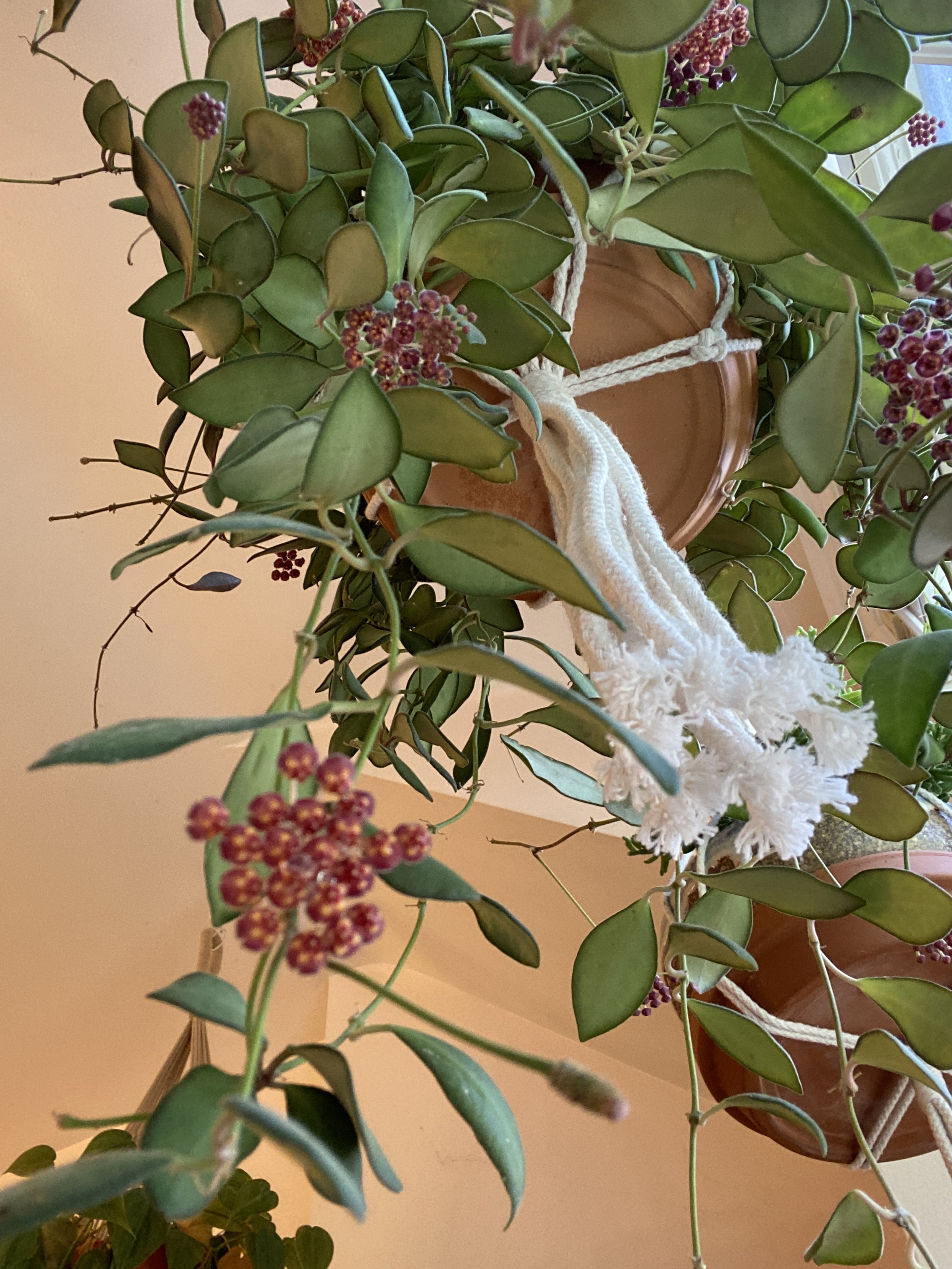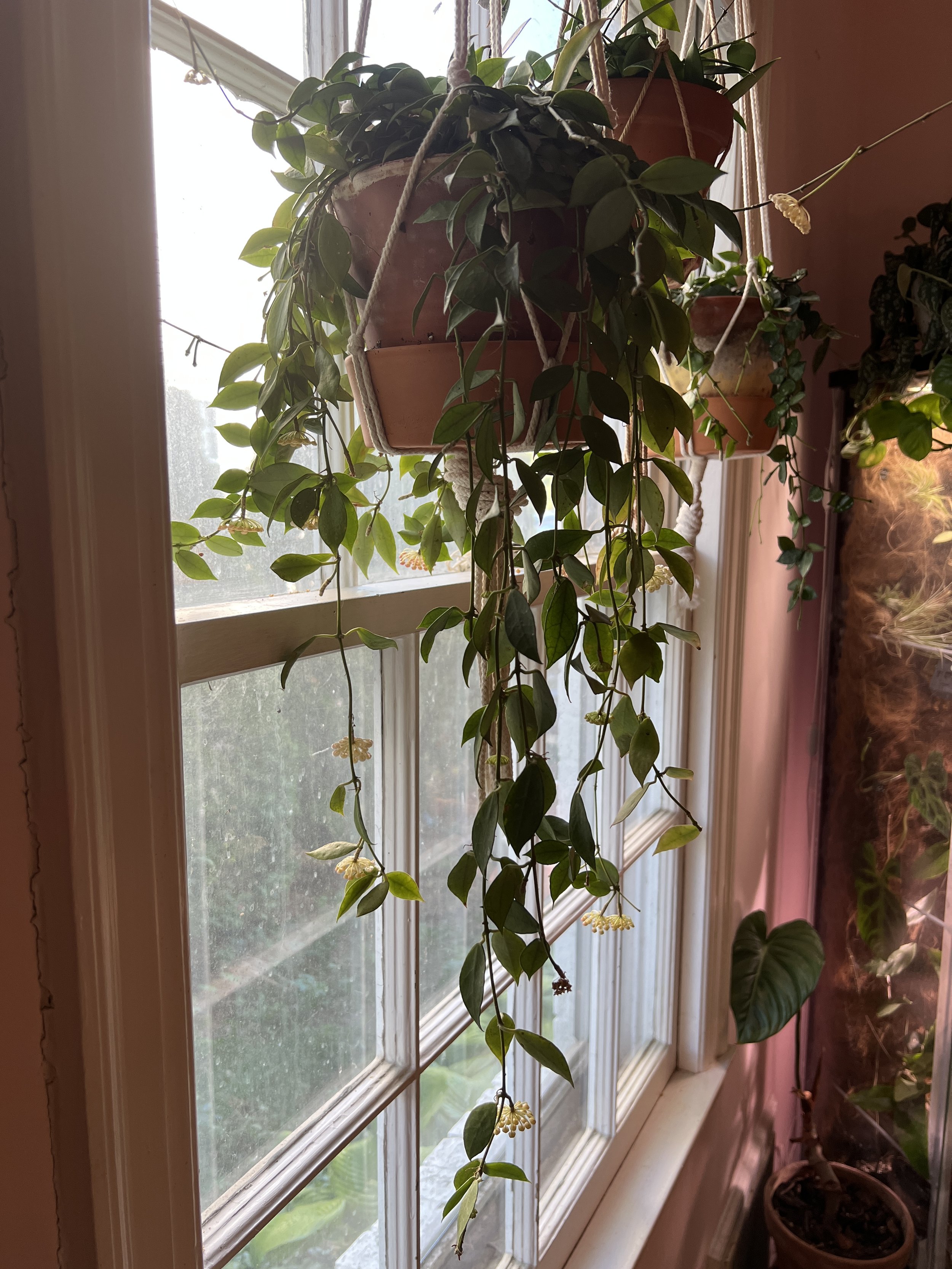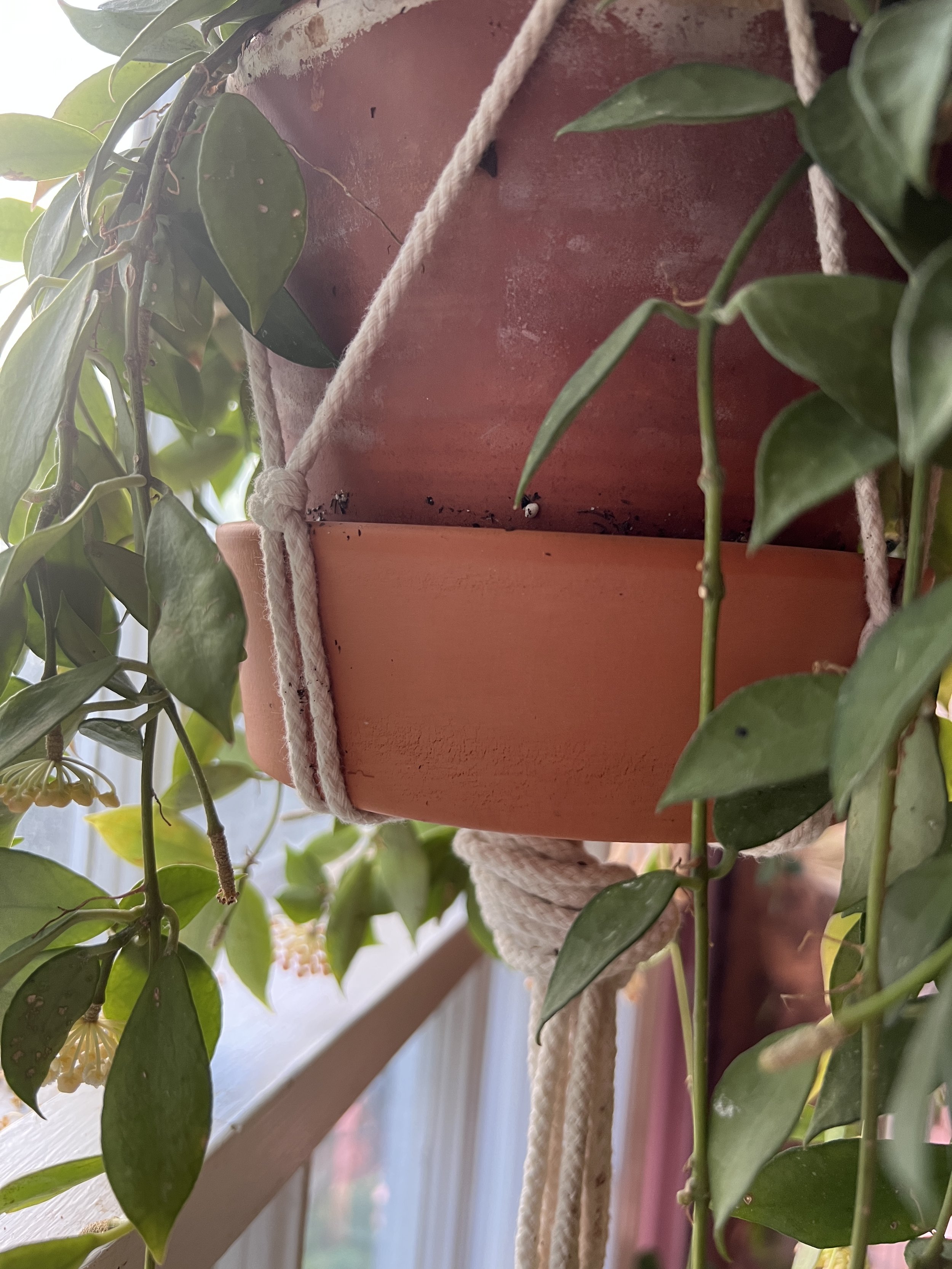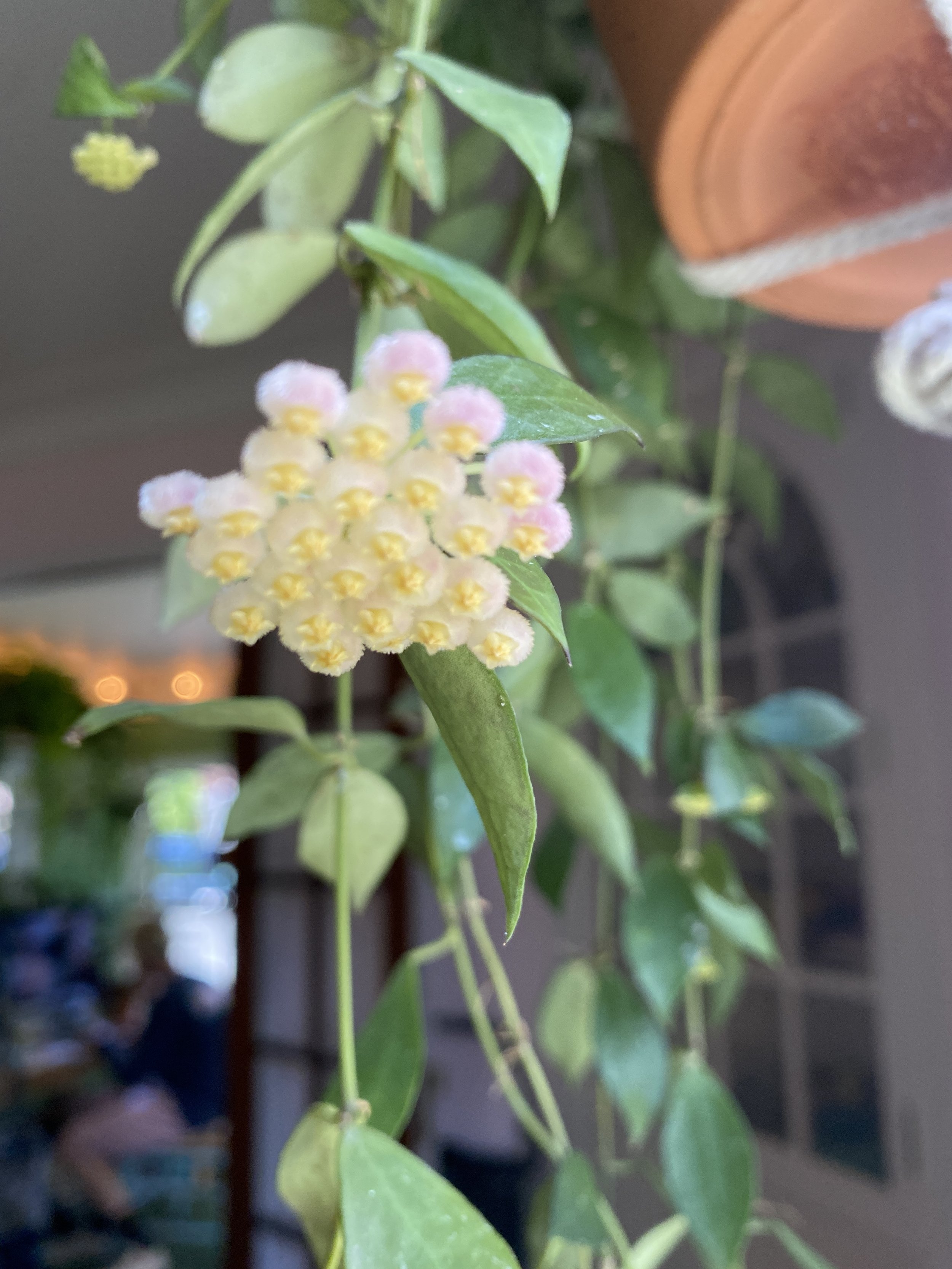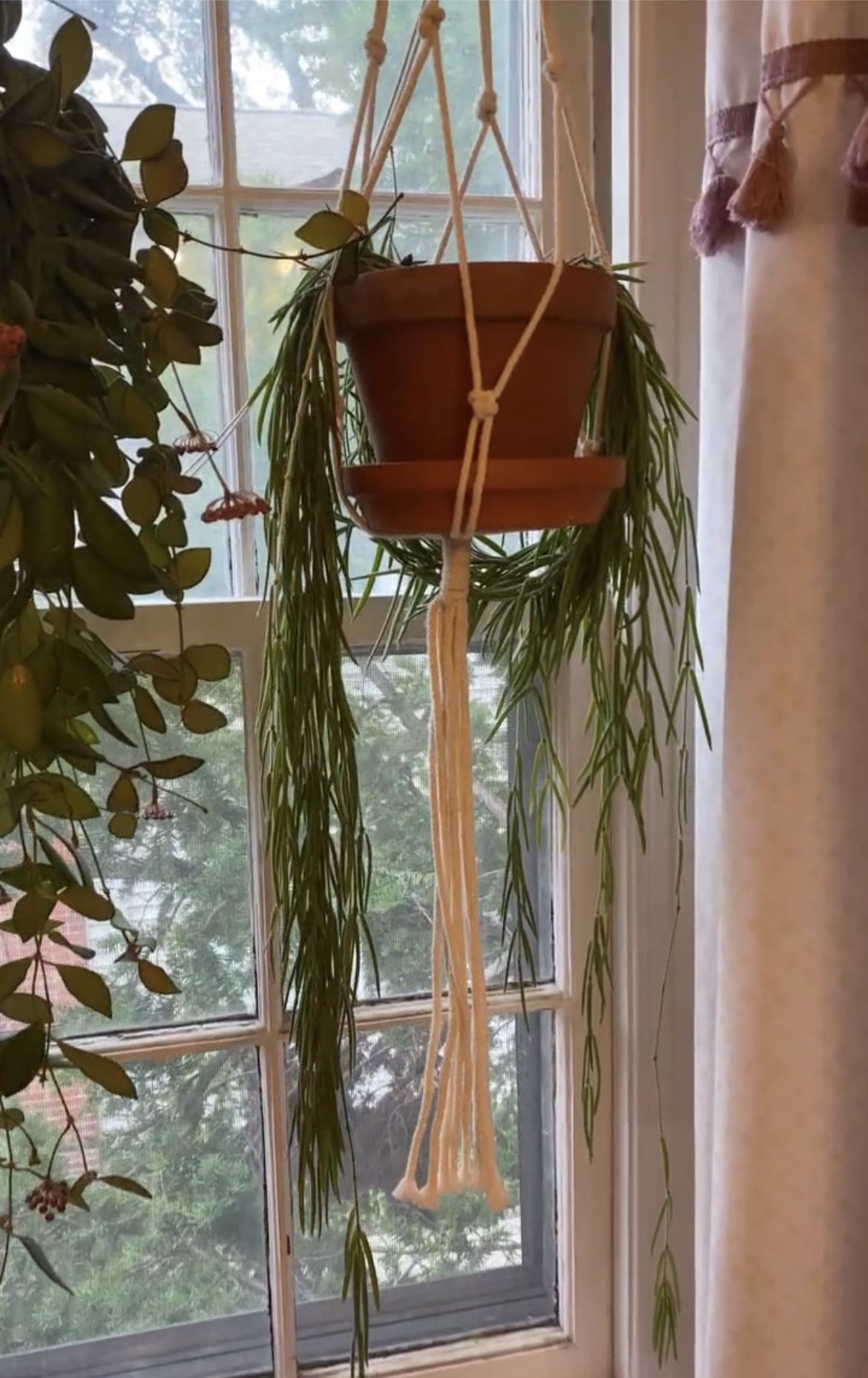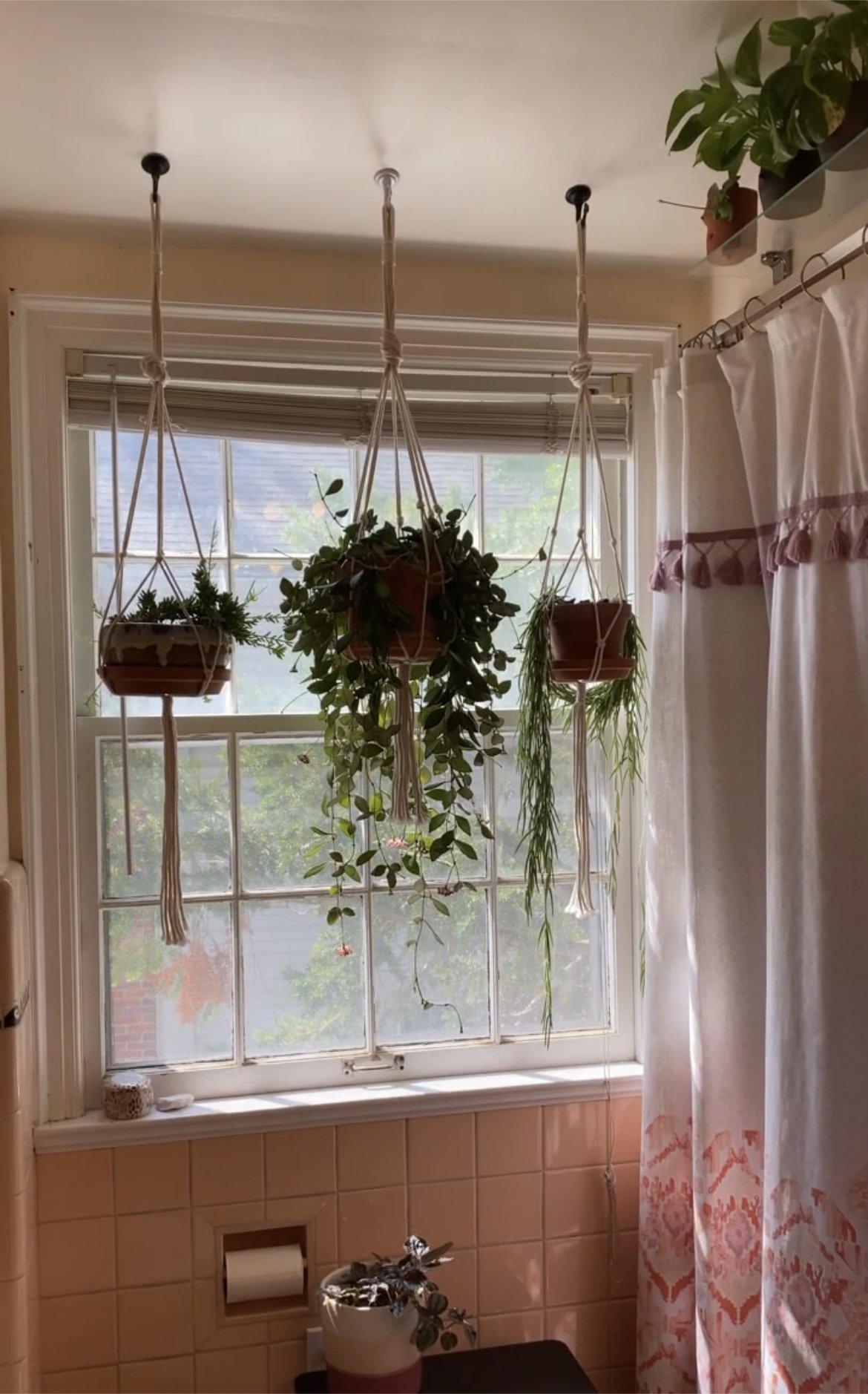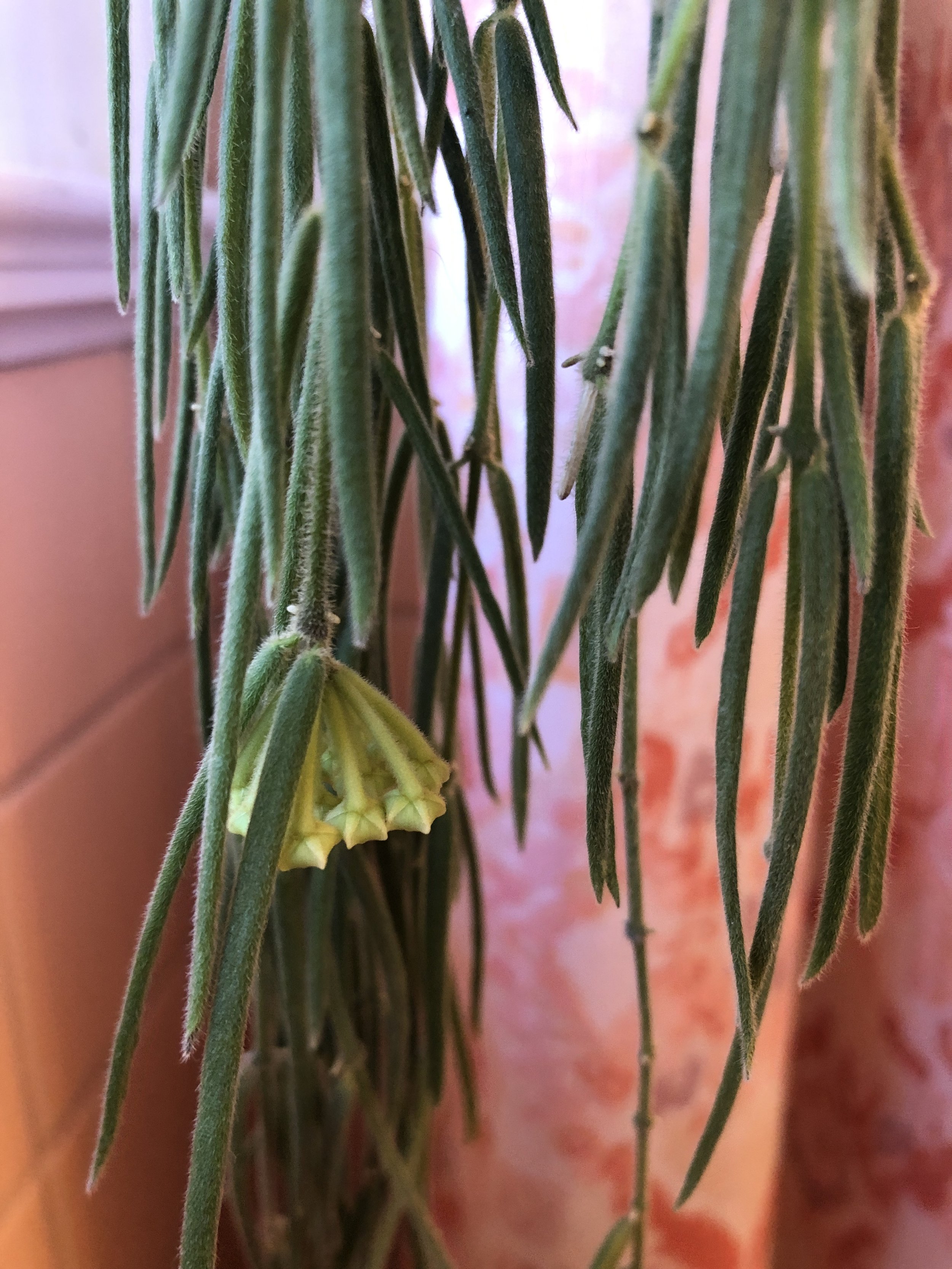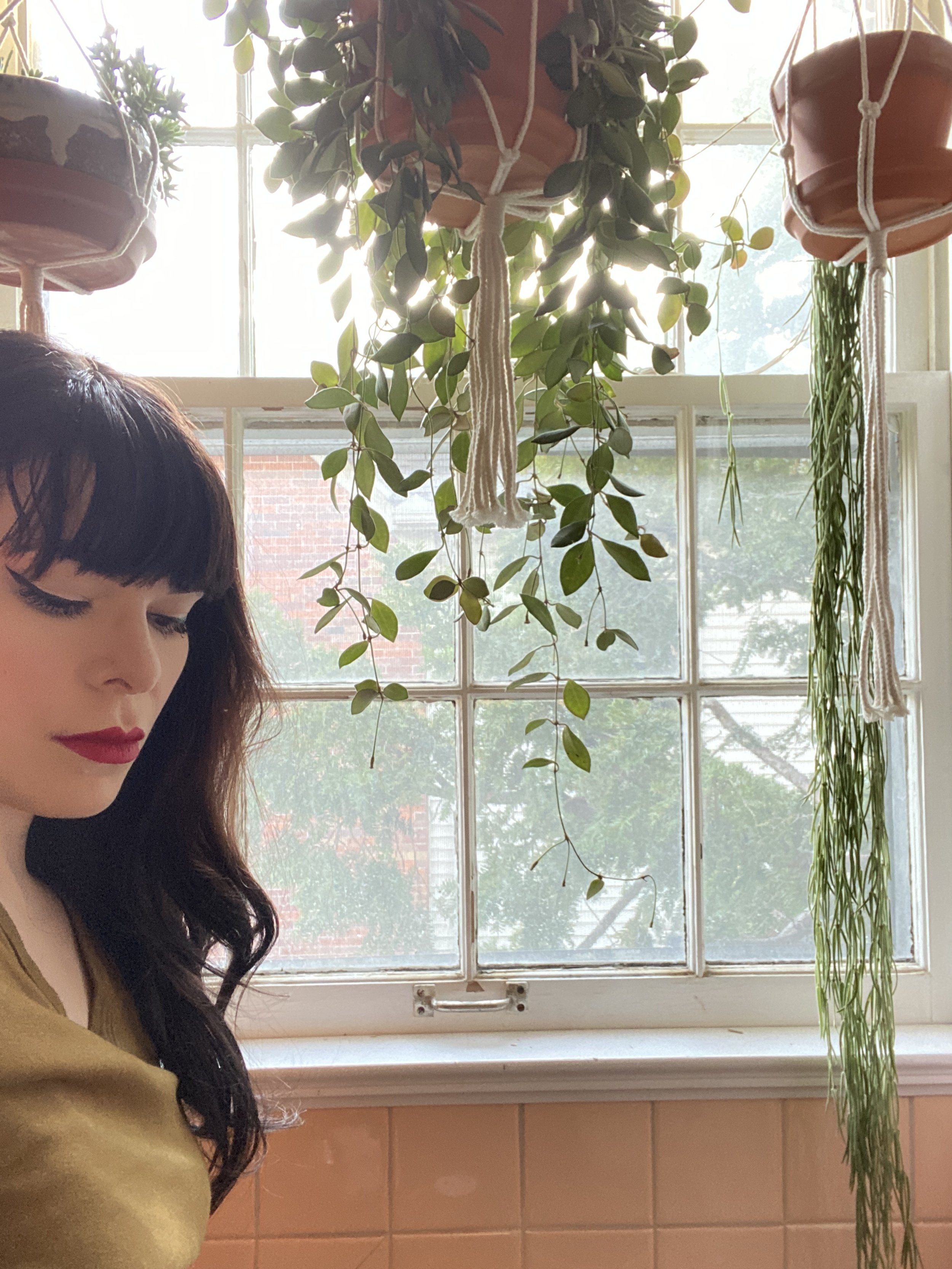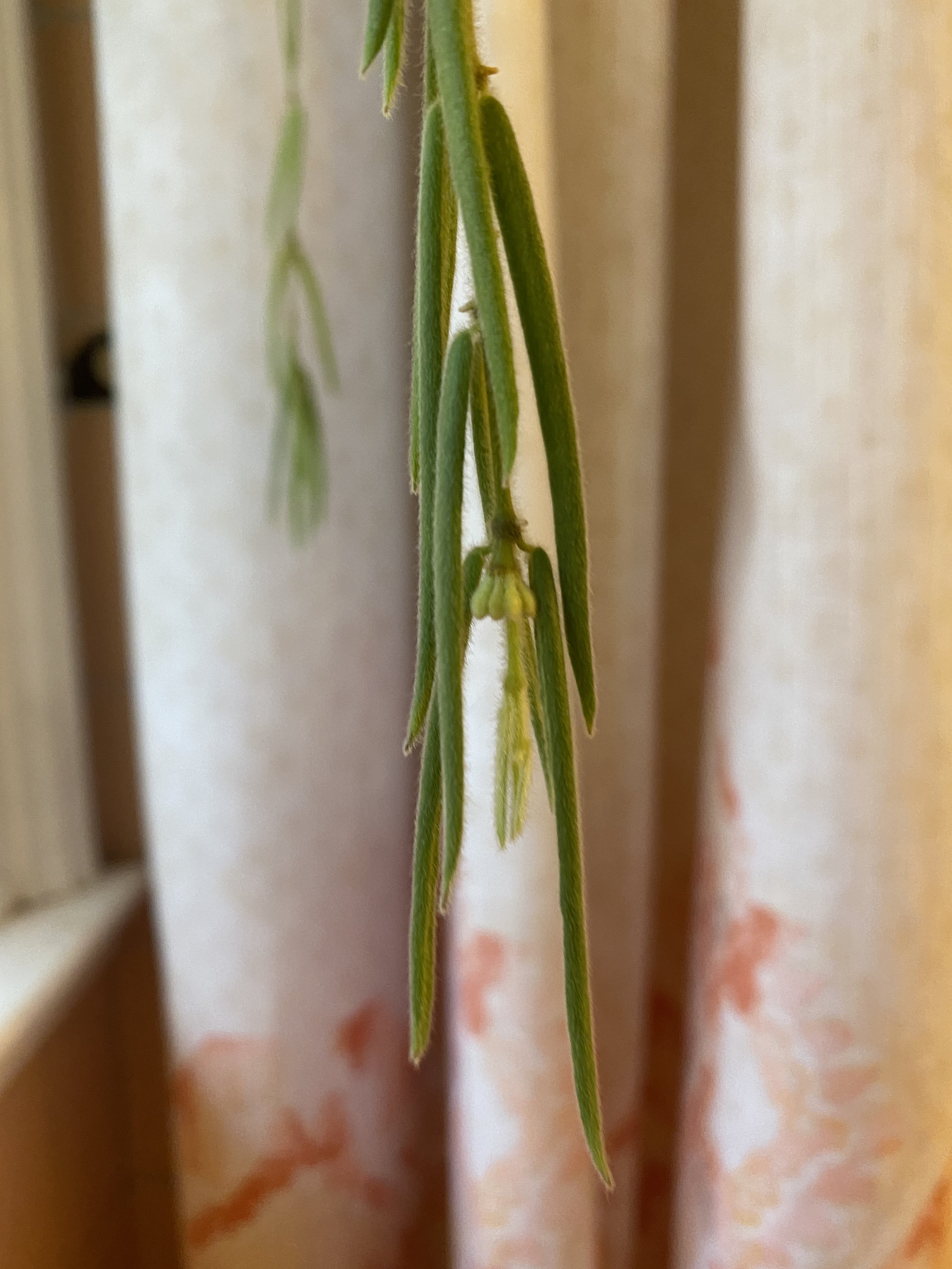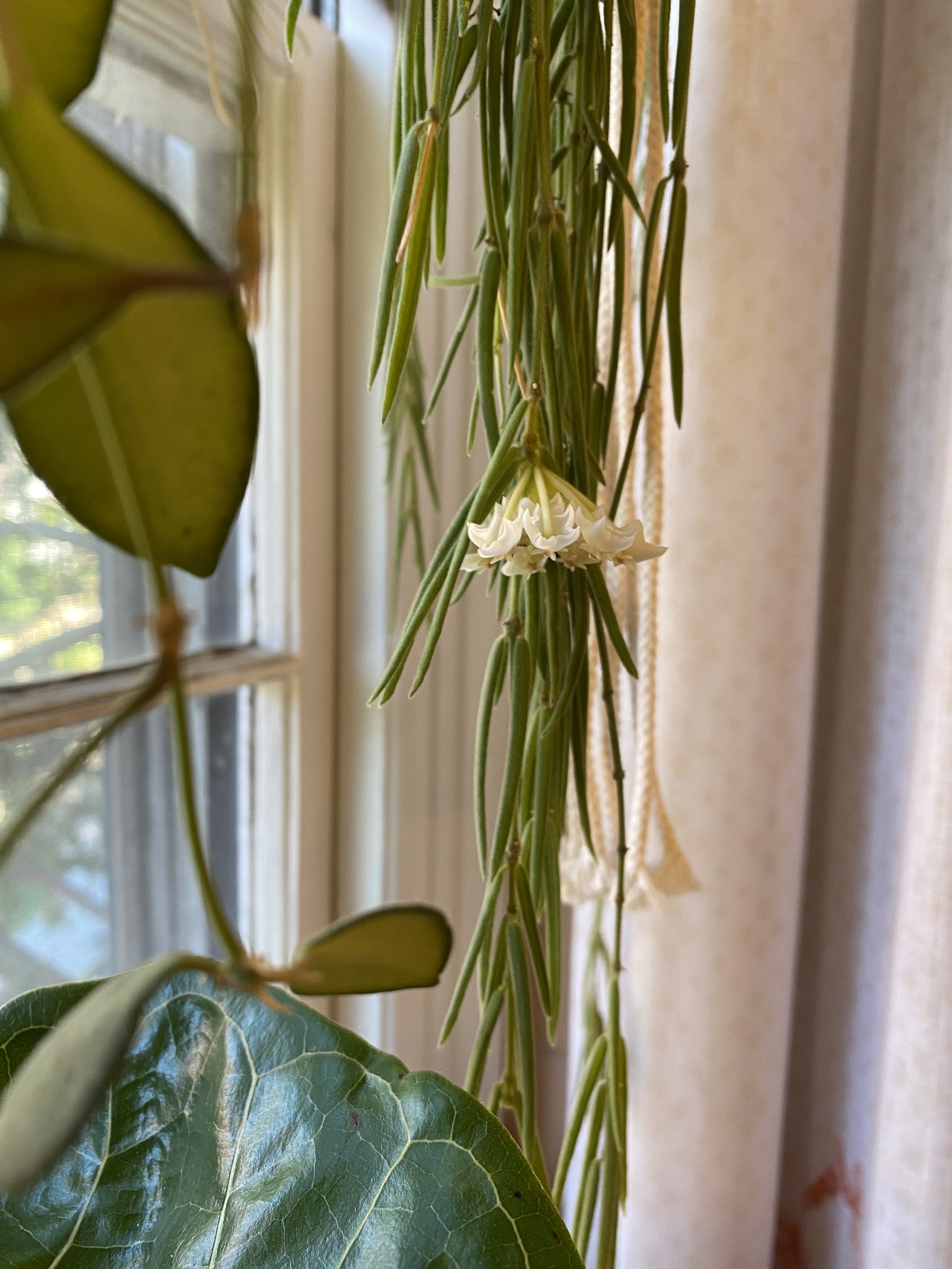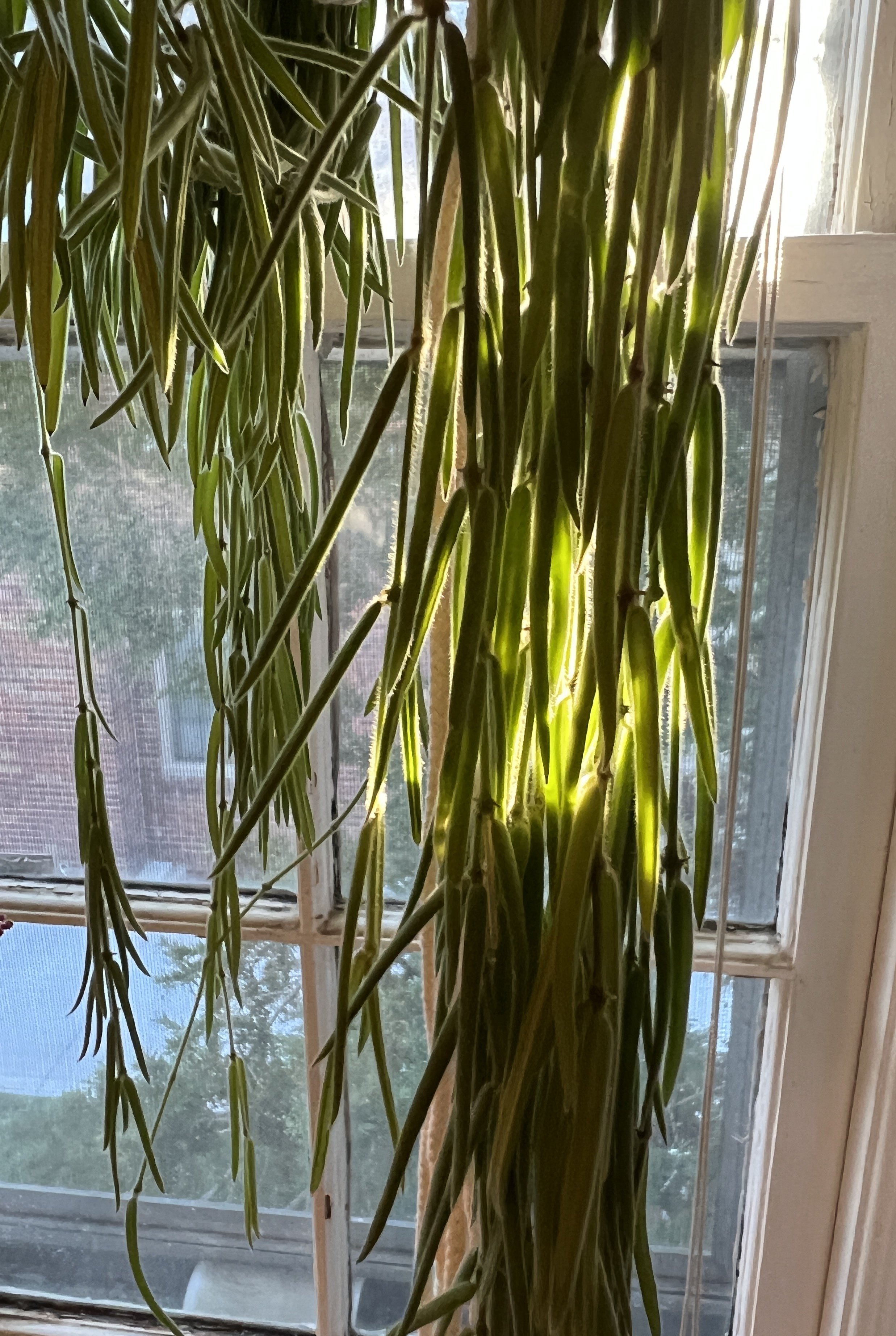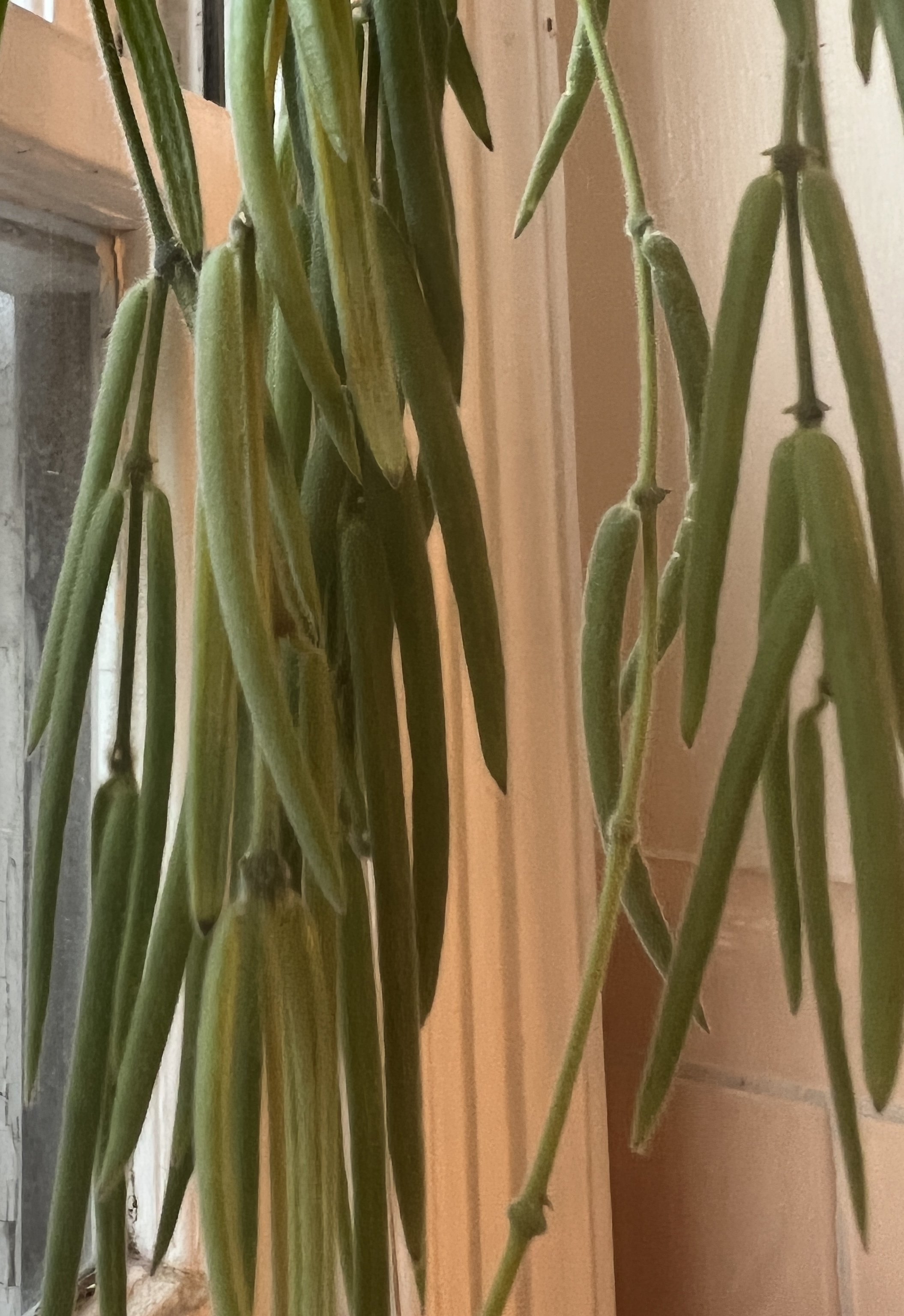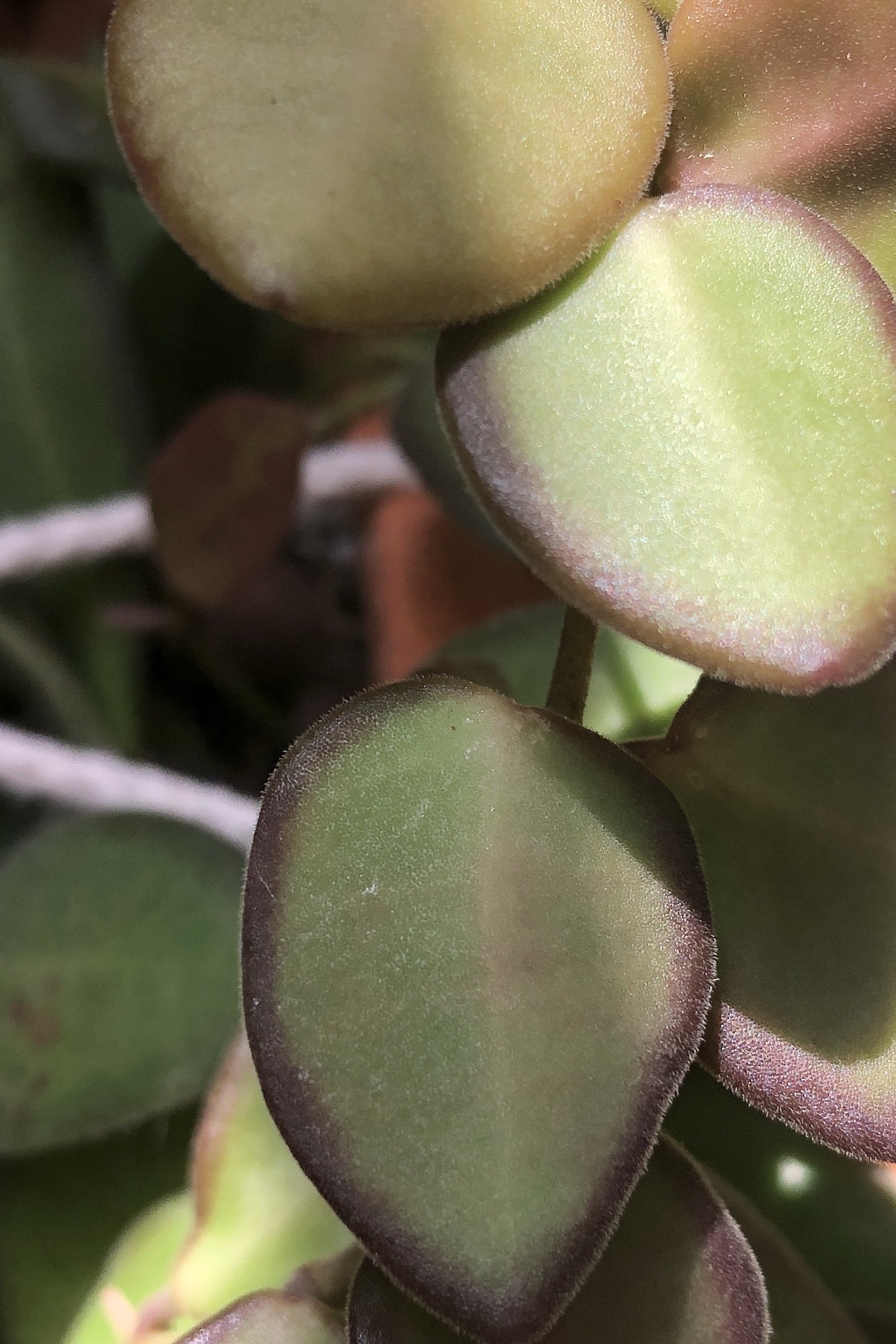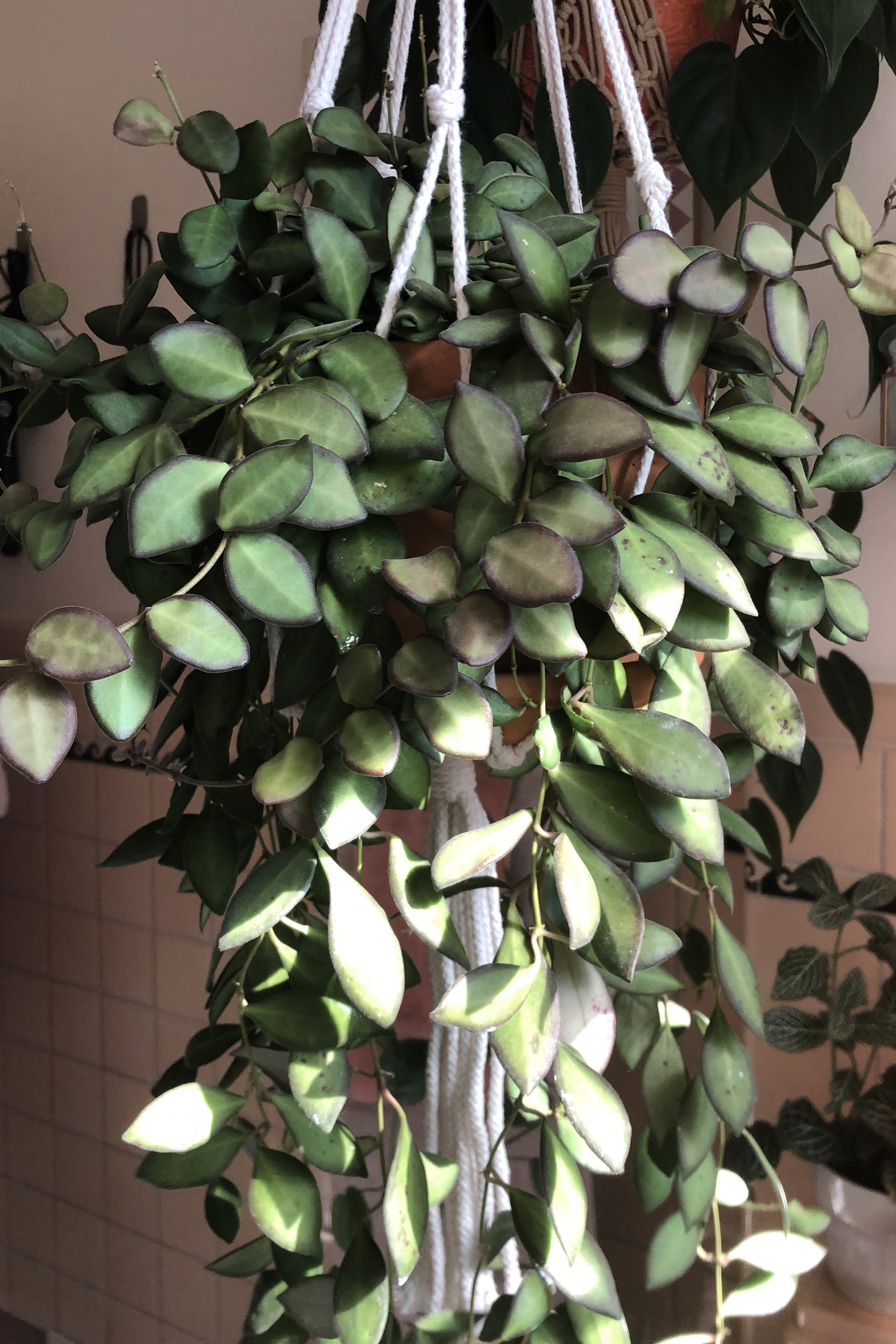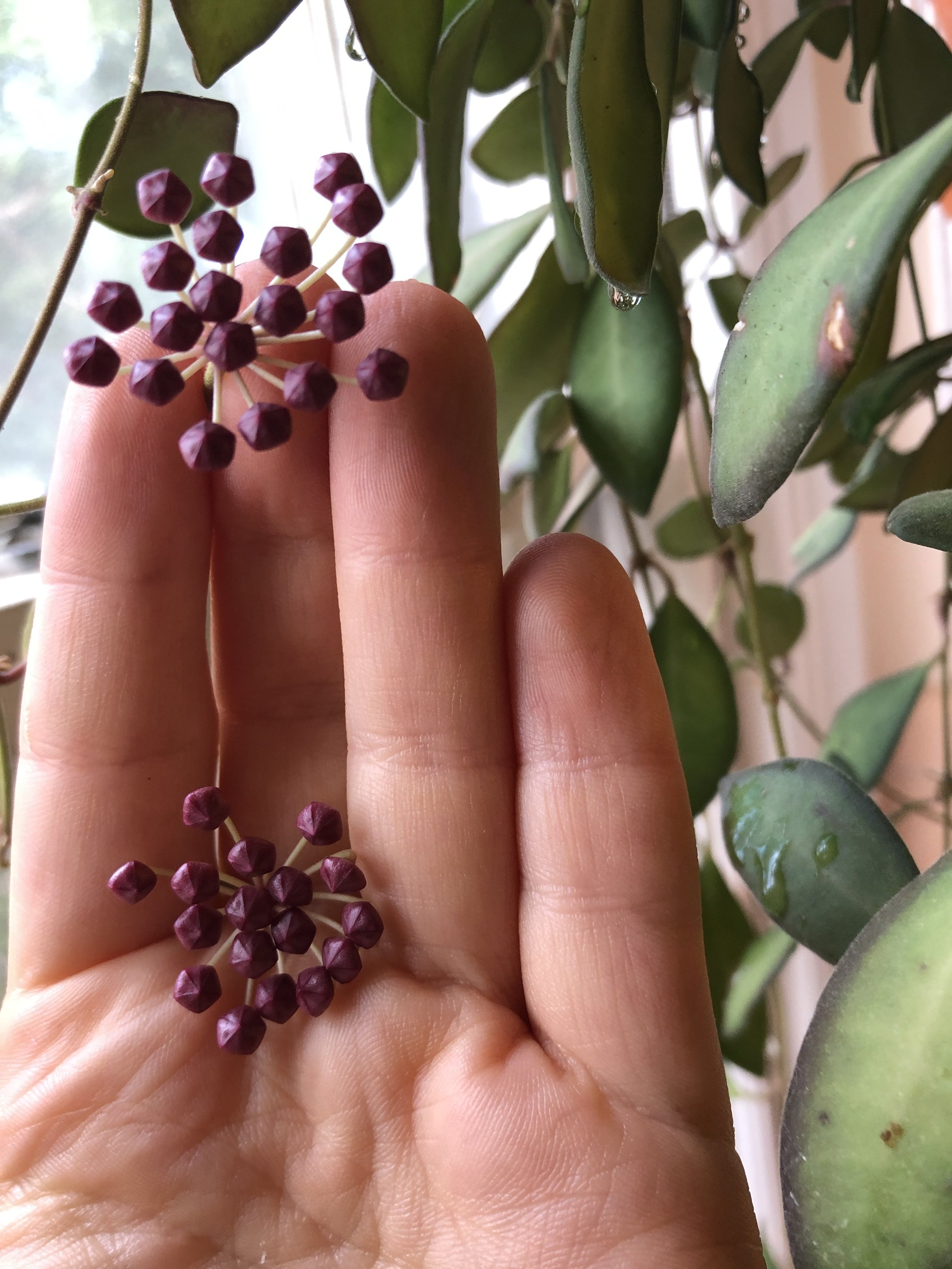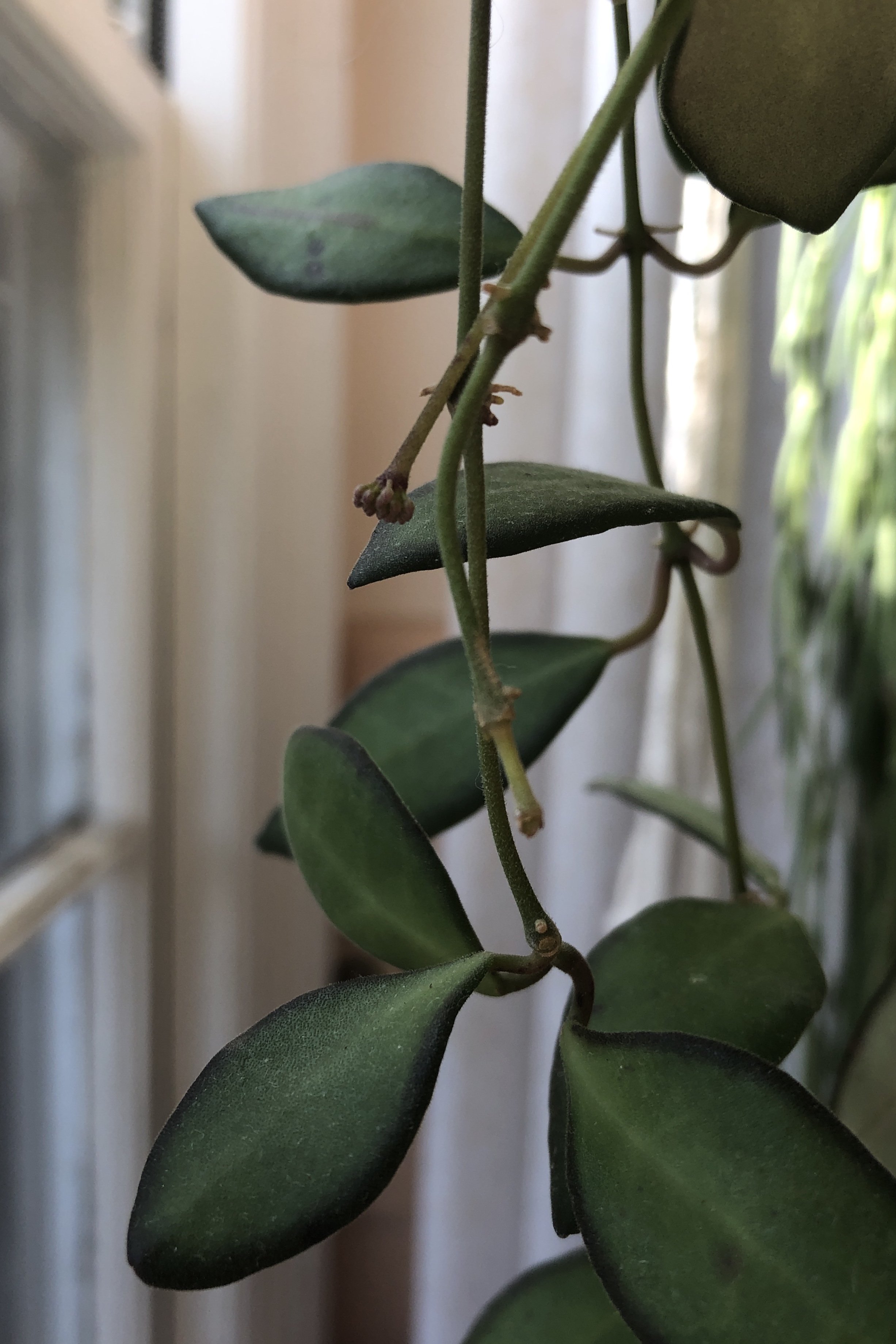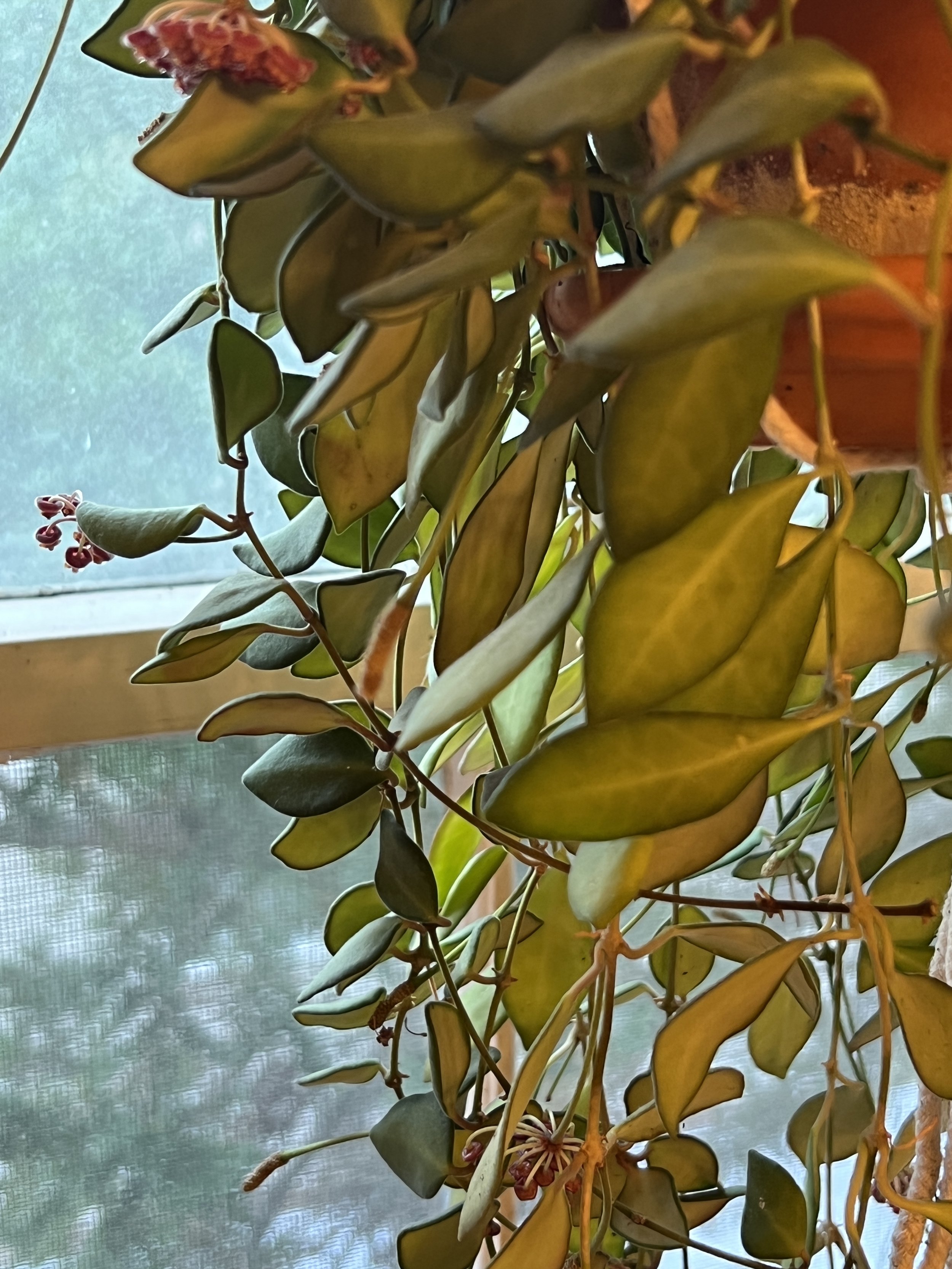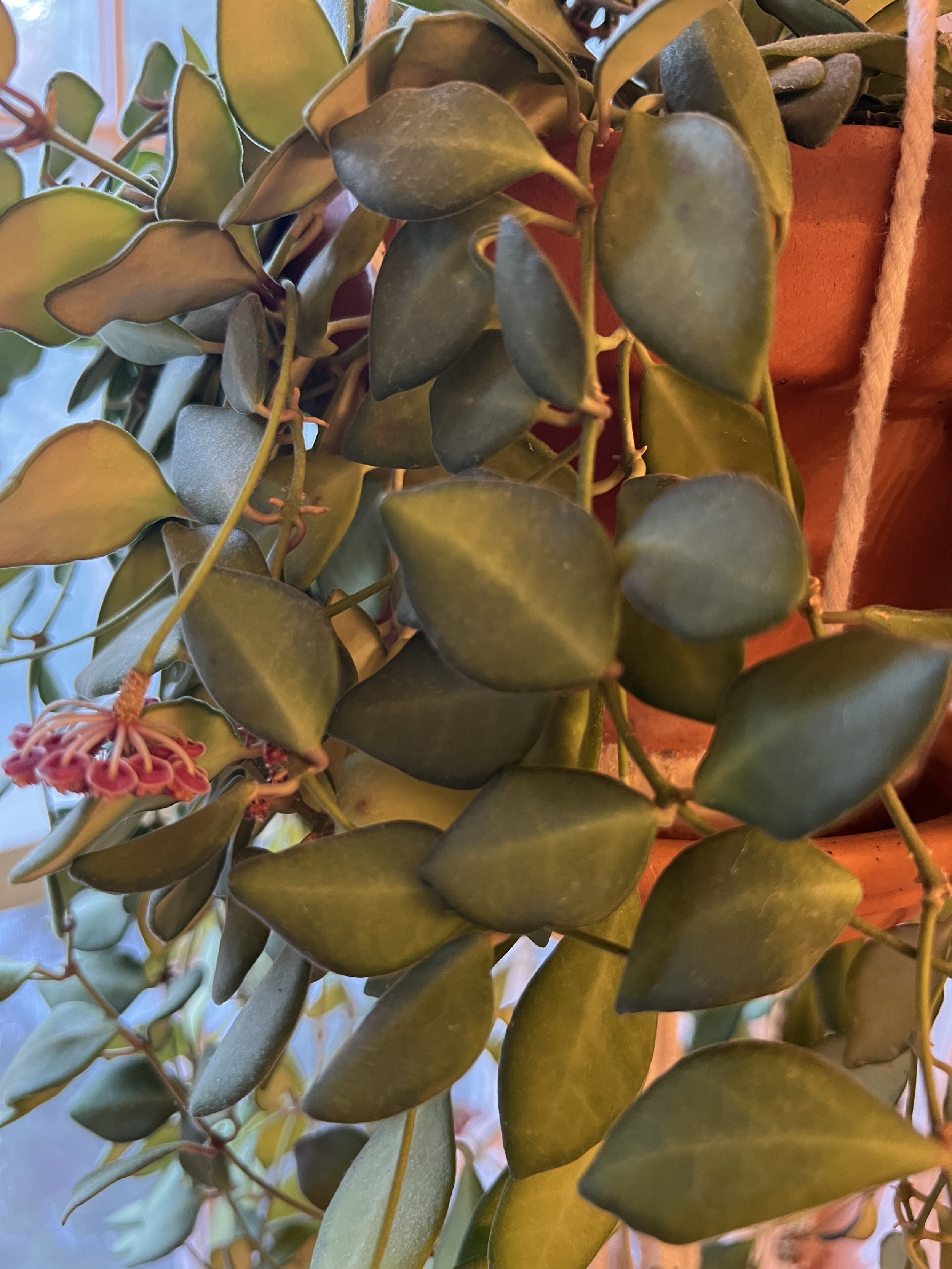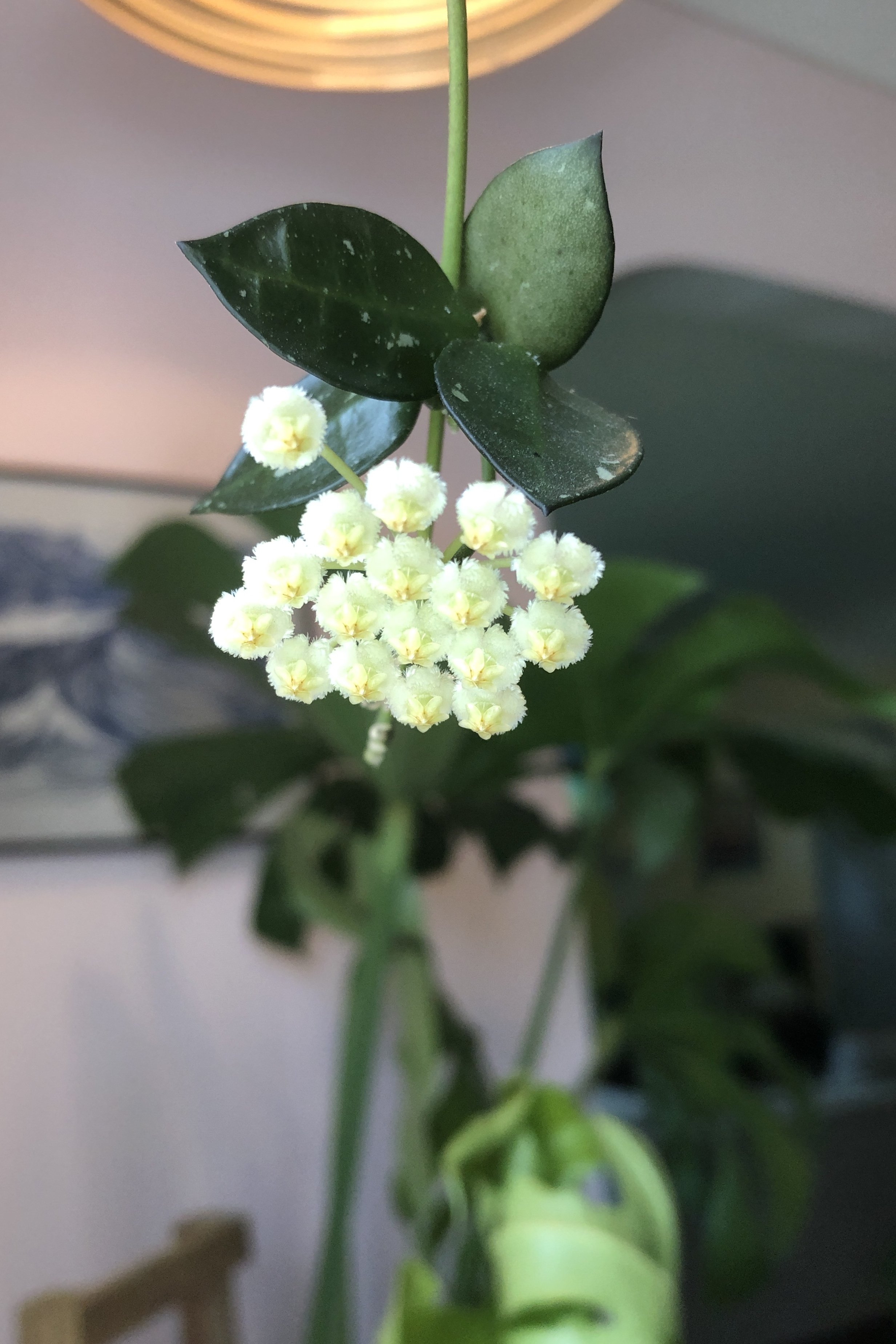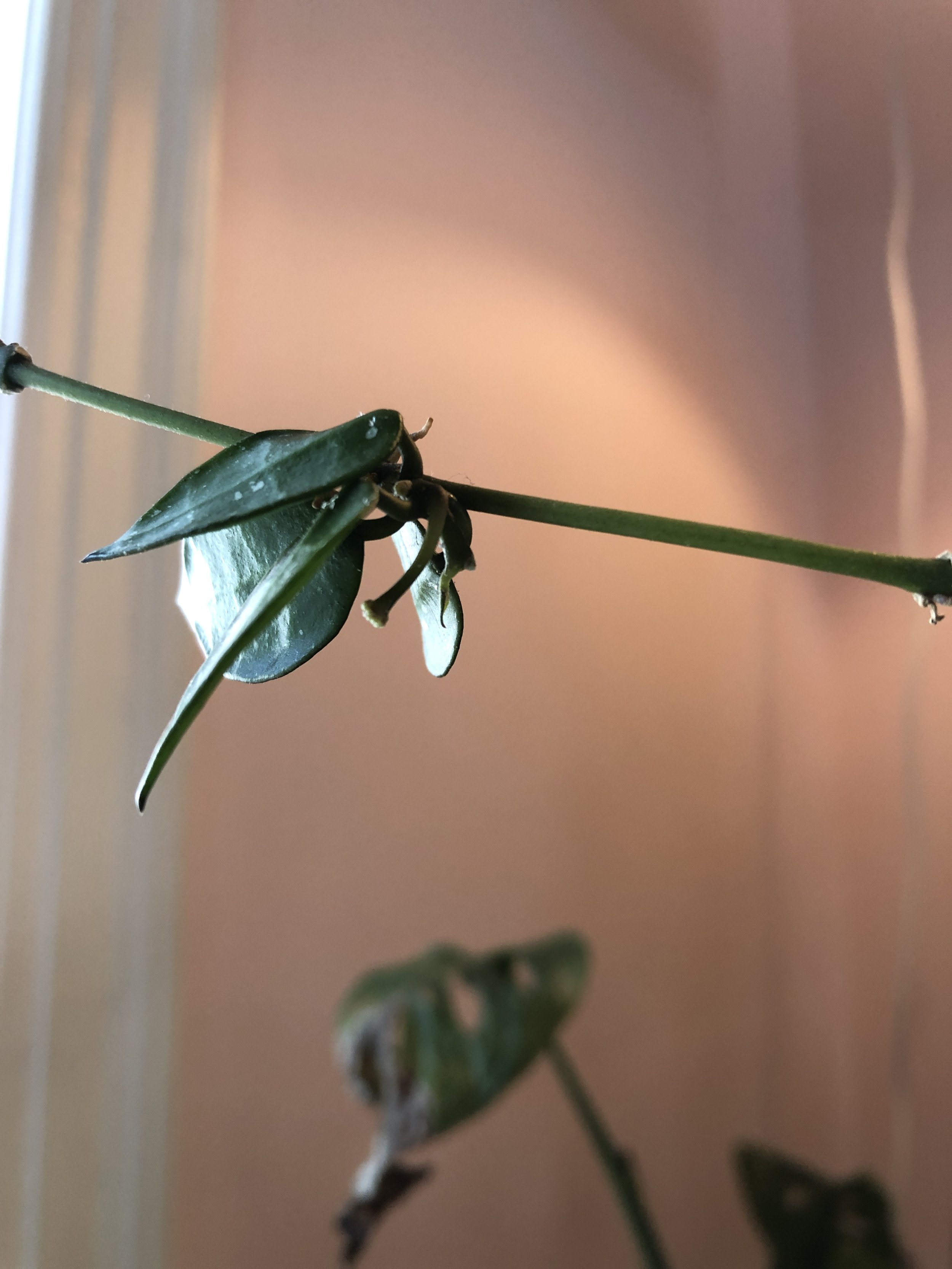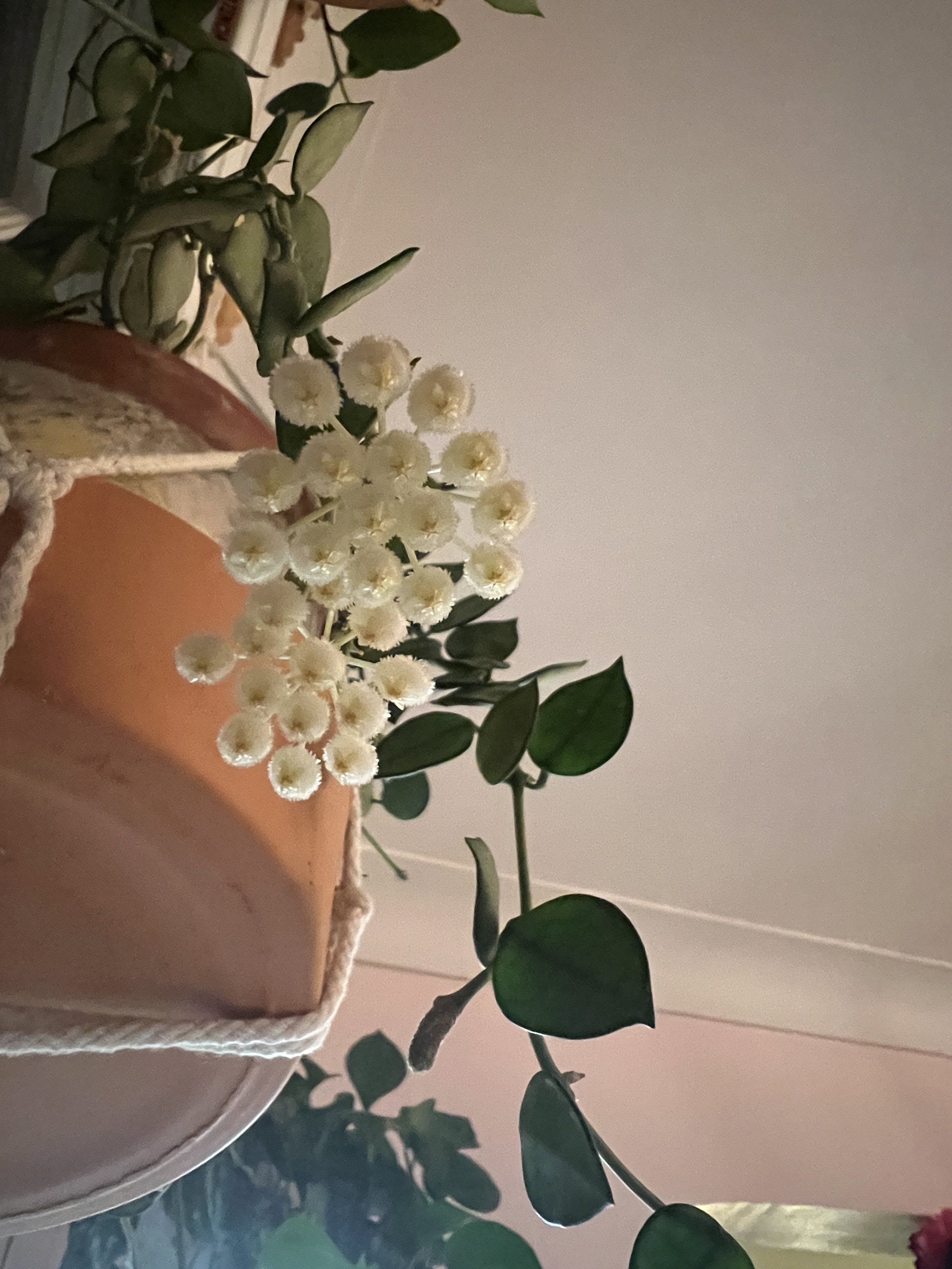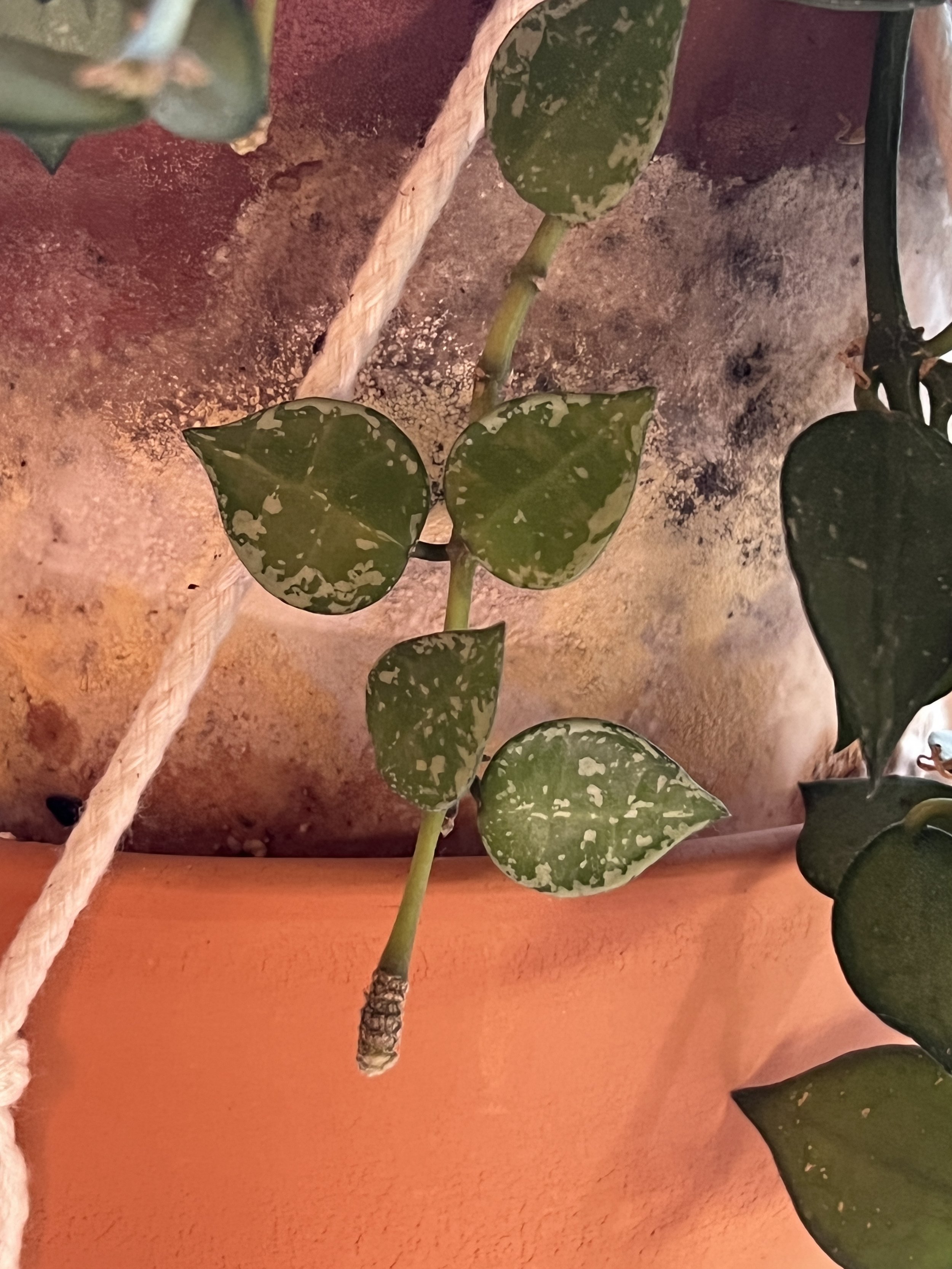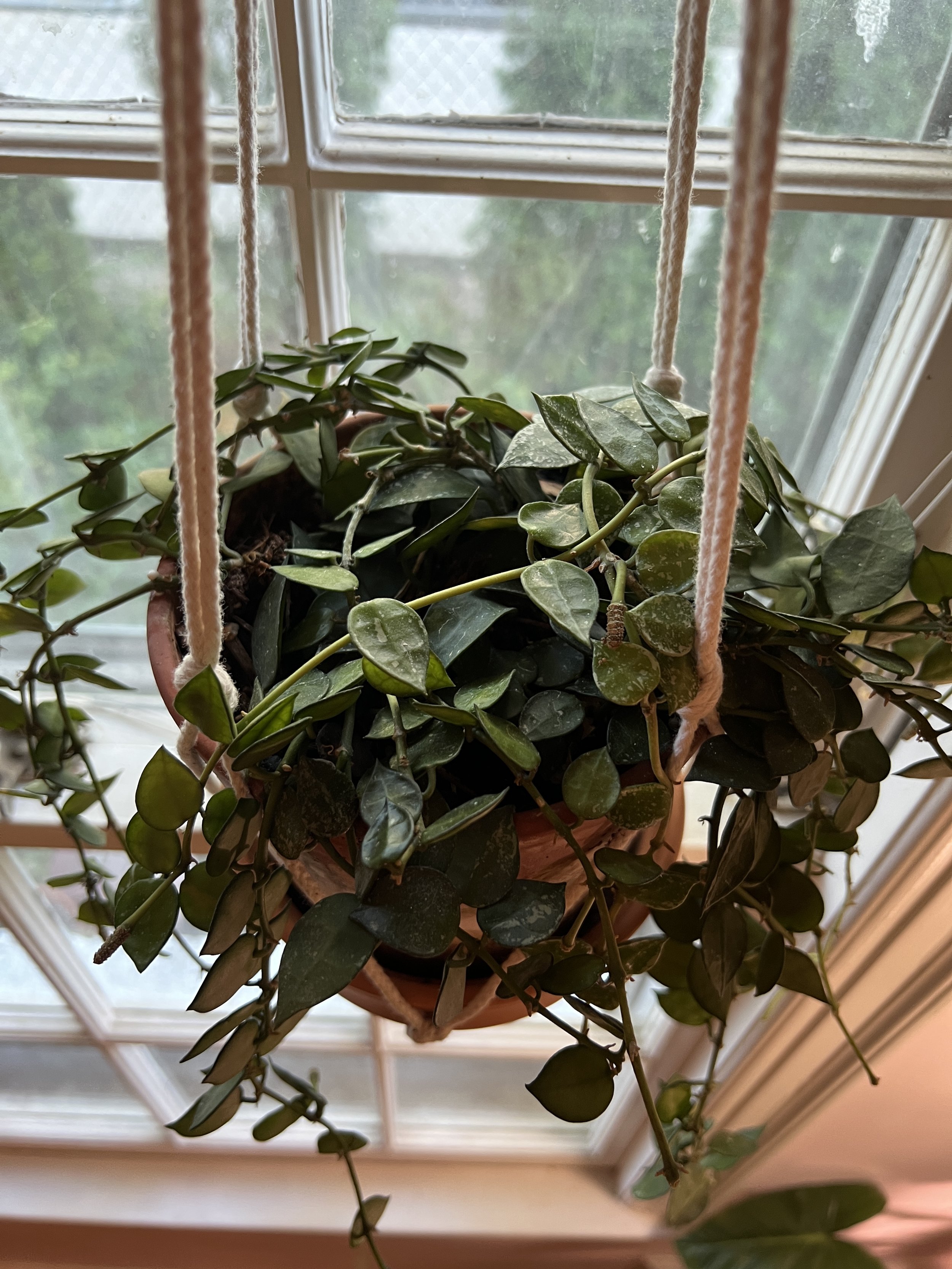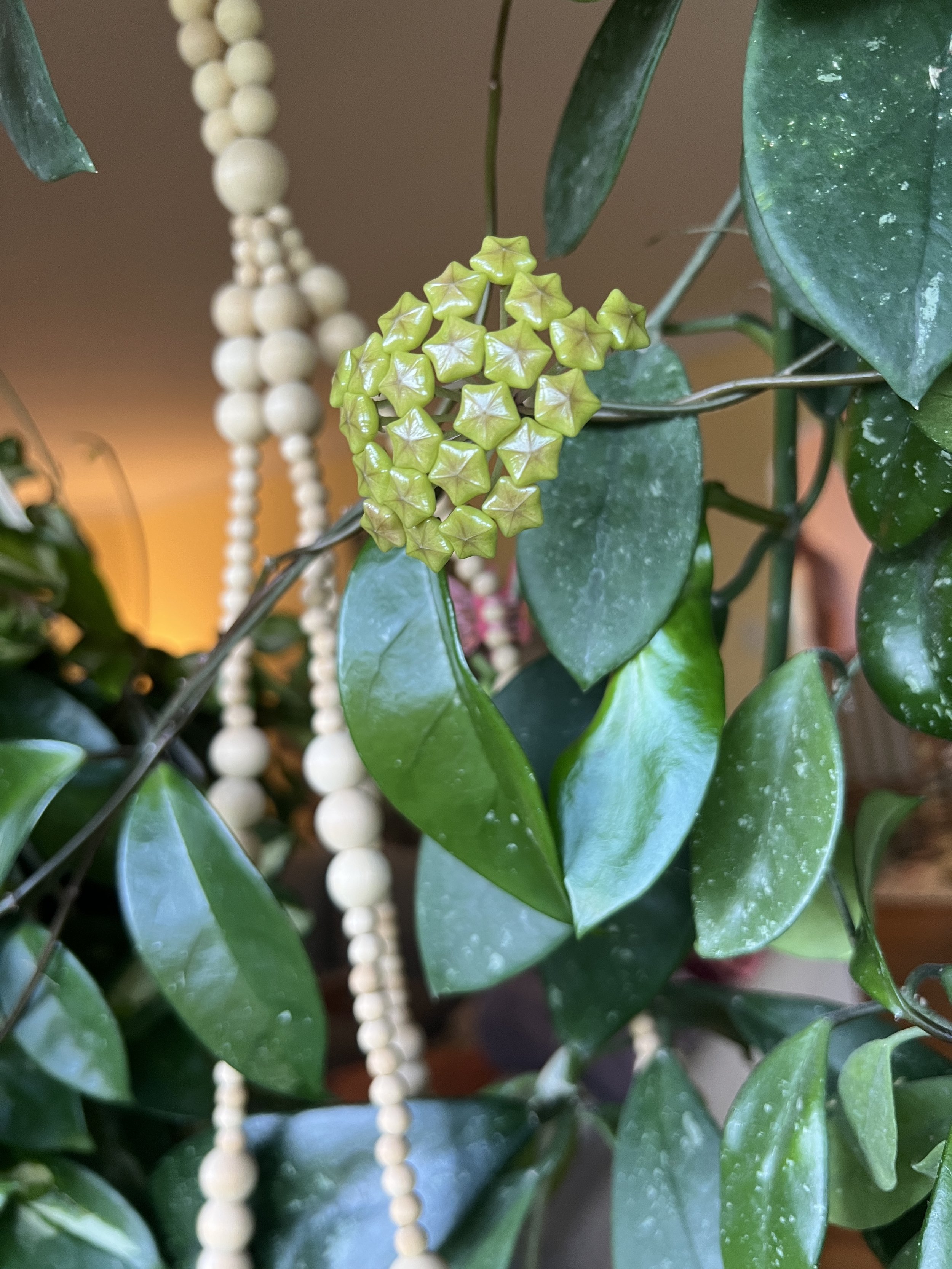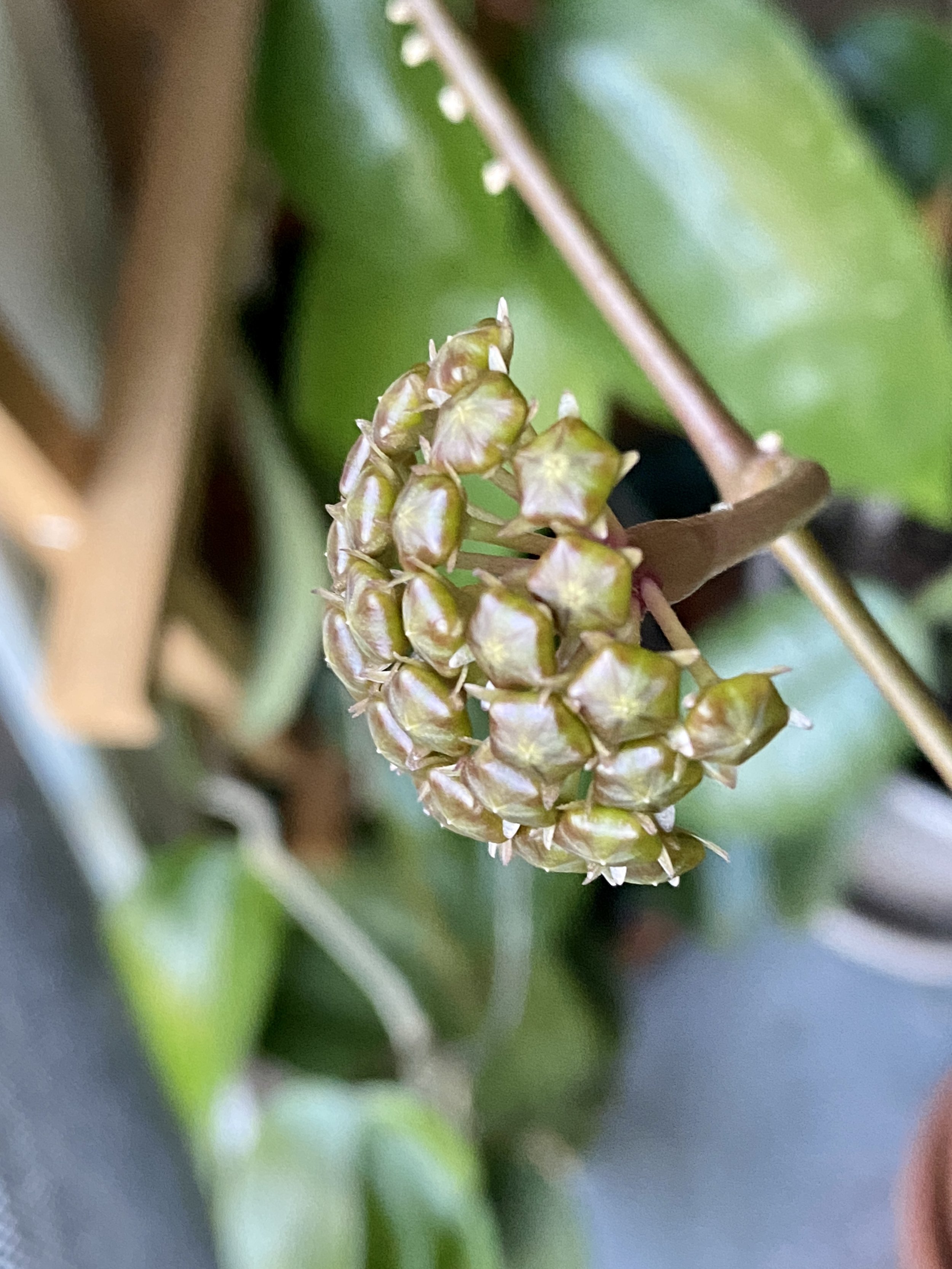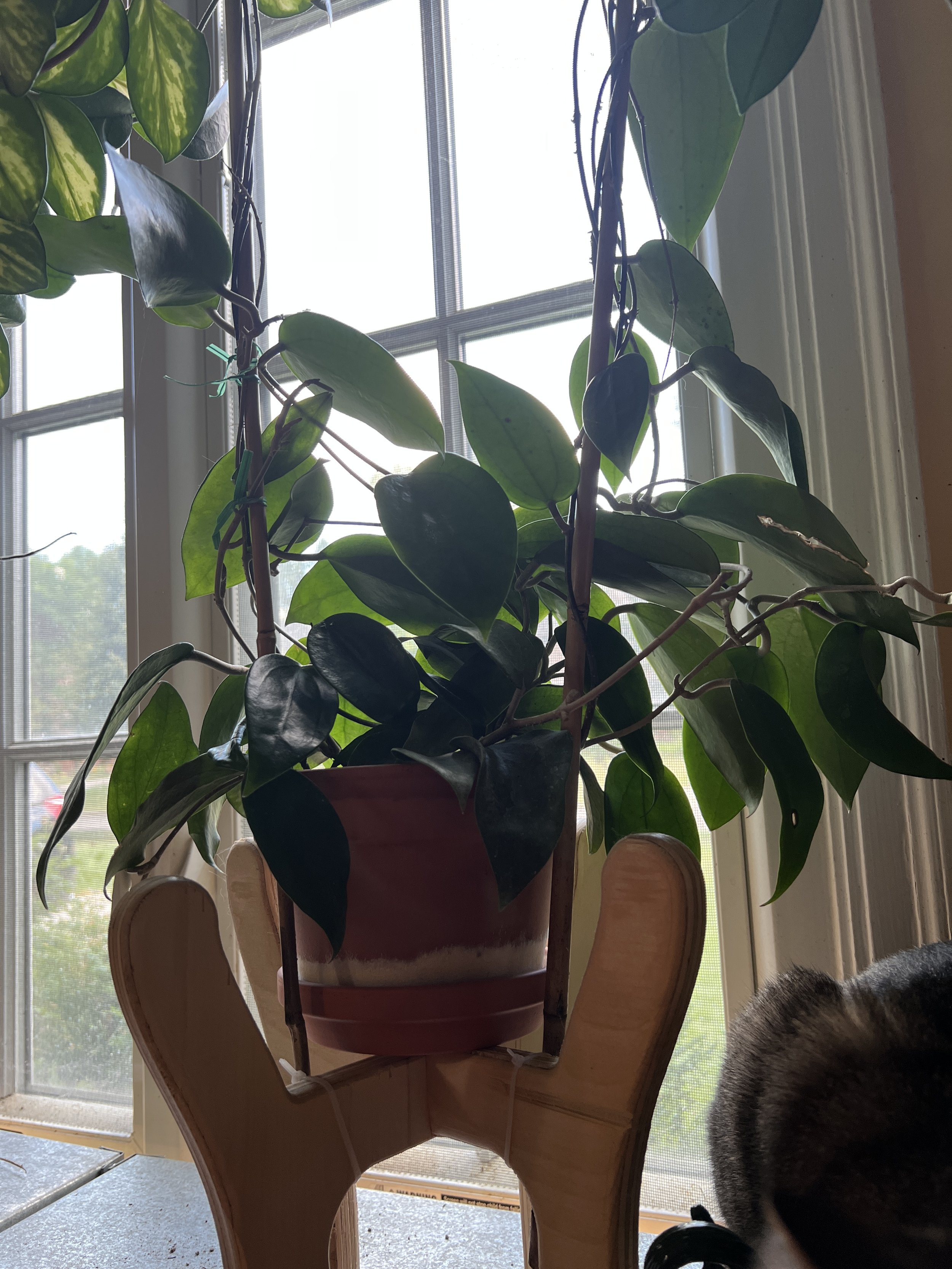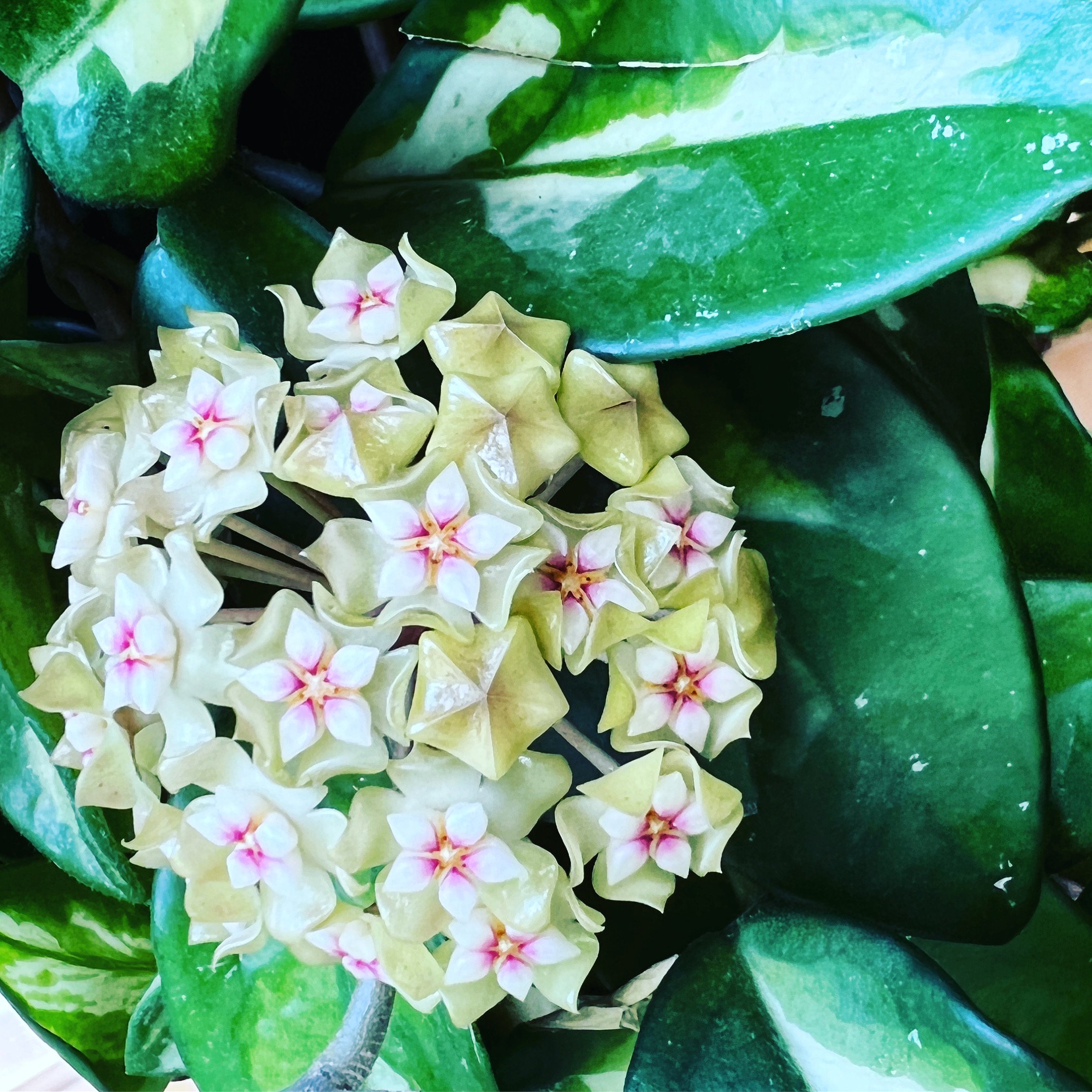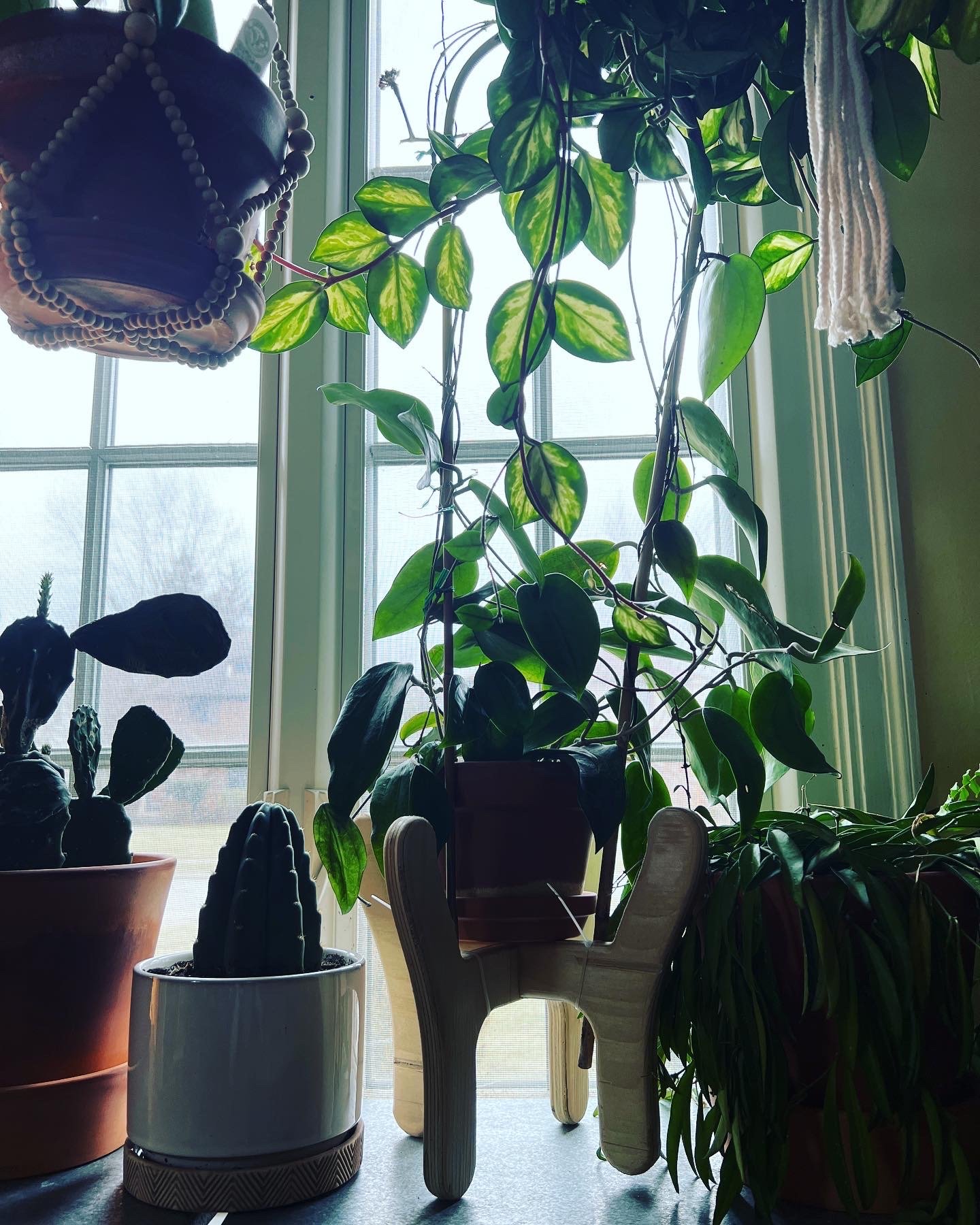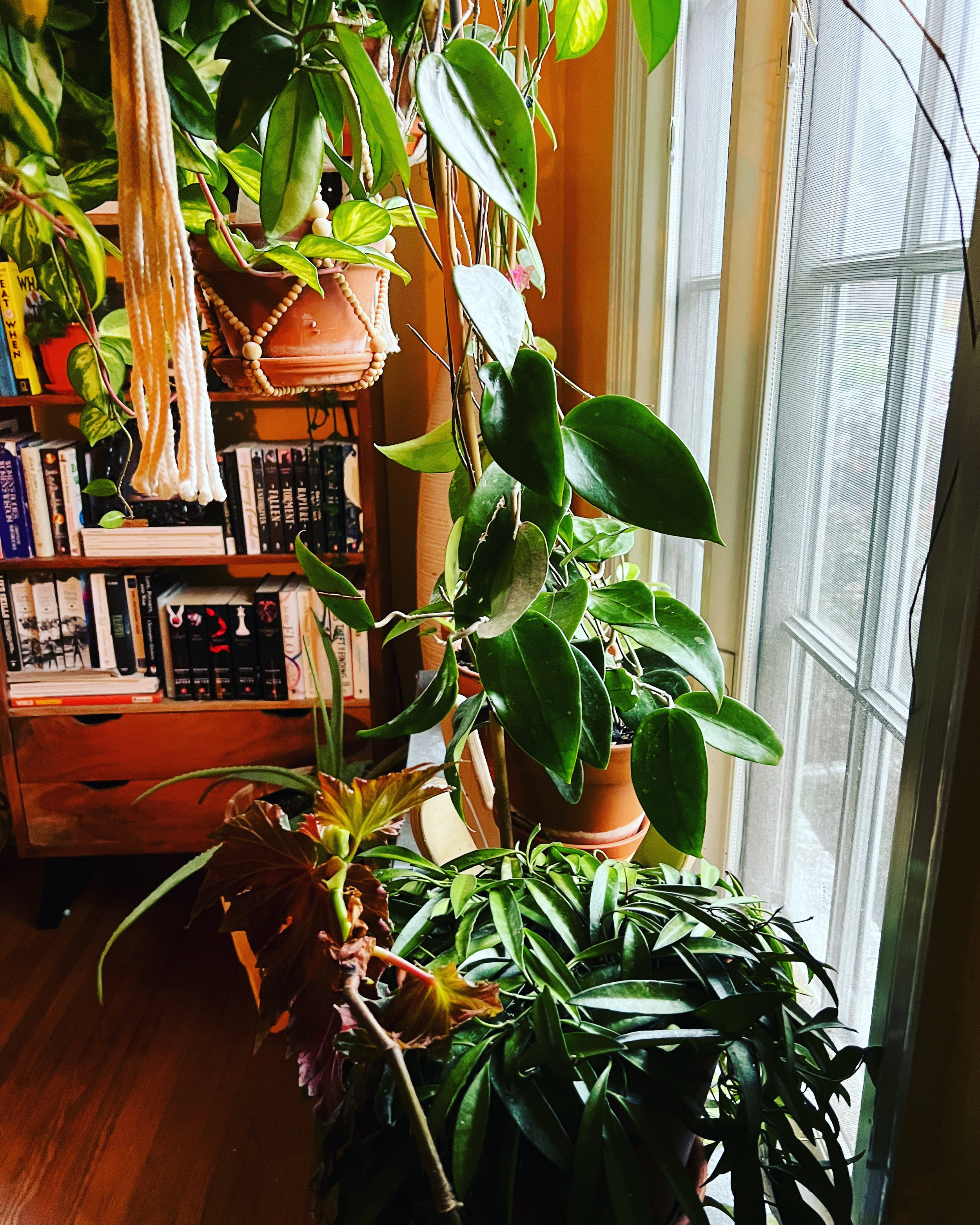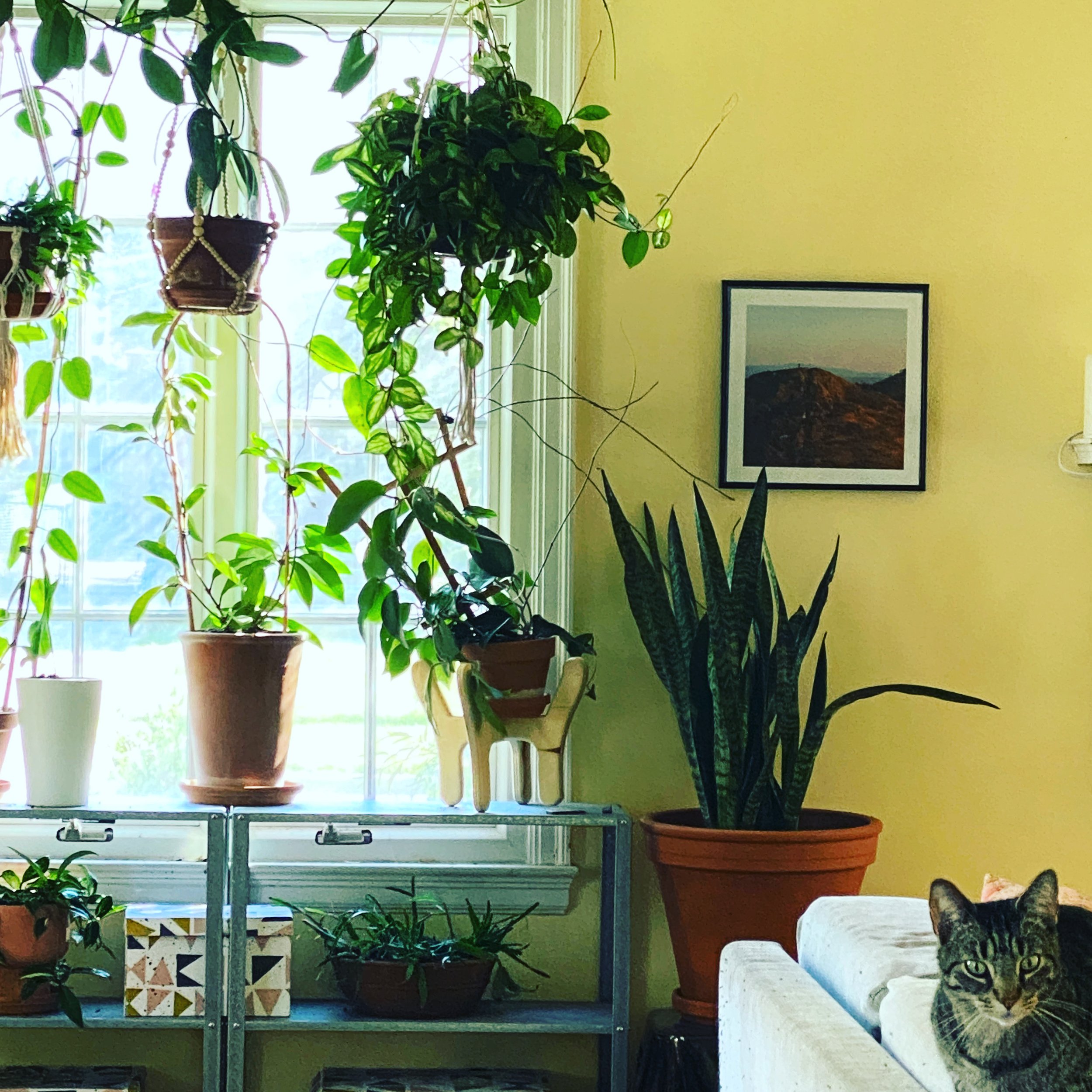Five Unexpectedly Easy-Care Hoya Plants
I’ve been thinking about this blog for a long time. I didn’t want to include the most common Hoya plants that often fall under the easy-care label. This is my honest experience with growing and blooming Hoya as houseplants. That means regular household light and humidity. Some grow easier than others. These are their stories.
For those who love the photos, there’s a gallery at the end of this blog where you can see additional photos of each plant.
“Easy-care” is so subjective. Due to different growing environments, different care techniques, different origins of two Hoya plants of the same species, differing opinions, and many other factors, what’s “easy” or “difficult” to me might be the exact opposite for someone else. Nevertheless, I wanted to share the Hoya plants that caught me by surprise.
So what factors am I considering when I determine a Hoya to be easy-care?
I always read up before buying a plant, but reading and research don’t compare to the experience of learning about the plant through hands-on care. I use my best judgement to determine if buying these plants will be a safe investment of my time and money, but so much of that process is nebulous in my mind until I am able to successfully put plant care into practice. Finding the perfect spot for the plant to live, learning how the plant likes to be watered, and hopefully getting the reward of a blooming plant are all experiences that require time, patience, and probably a little bit of luck. So what separates the easy-care plants from those that are more challenging and time consuming?
In Short…
Regular Household Conditions - no greenhouse cabinets, tents, cloches, or supplemental grow lights.
Time - the plant has consistently thrived and bloomed over an extended period of time.
No Hovering - the plant doesn’t require constant check-ins or specialized care beyond general maintenance.
No Poker Face - these plants tell me through the look and feel of their foliage if they need more water or light. No guessing involved.
I always read up before buying a plant, but reading and research don’t compare to the experience of learning about the plant through hands on care. I use my best judgement to determine if buying these plants will be a good long-term investment (read: am I fairly confident that I can keep this plant alive?), but so much of that process is nebulous in my mind until I am able to successfully put it into practice. Finding the perfect spot for the plant to live, learning how the plant likes to be watered, and hopefully getting the reward of a blooming plant are all experiences that have required my time and patience. These are just my experiences, but I hope they can be of assistance or entertainment to you.
Hoya ‘Rebecca’
(Hoya lacunosa ‘Langwai Island’ x Hoya obscura)
‘Rebecca’ was a surprise to me in more ways than one. I purchased her as Hoya siptangensis, first of all. That ID didn’t sit right with me from the beginning, as explored in the blog post entitled Hoya siptangensis…maybe? After some research and some input from plant friends, it became clear that I have a Hoya ‘Rebecca’ here, and I’m not mad about the incorrect ID at all.
In the years since discovering her true identity, ‘Rebecca’ has been one of my easiest Hoya plants to keep. She requires so little from me, but she gives so much. I had built up the idea in my mind that she would be difficult because her leaves are on the smaller side. I’ve since found, to my aforementioned surprise, that small leafed Hoyas are not as difficult as I’d heard. I’m not sure if this is a myth that’s floating around out there in the Hoya-verse, or if I just got lucky with my plants and/or my environment.
Hoya ‘Rebecca’ lives in an East facing window where she gets filtered morning sun, and bright light throughout the rest of the day. I water her when she looks droopy. I’m sure to water her through the drainage hole, and then I allow the excess water to sit in the extra large saucer for at least 15-20 minutes while she soaks up what she needs.
I don’t fertilize often, but I do refresh her pot yearly with earthwork castings and fresh potting mix. I rinse and flush the terracotta pot with water. She seems very content in her existing pot, so I don’t ever size it up. I just take her out, let any loose potting mix fall off freely, and then replace it with a blend of Special Orchid mix (perlite, orchid bark, charcoal), earthworm castings, and general potting mix.
Hoya linearis
This is another unexpected gem. I coveted this plant for a while, even though I was initially unsure of what I was getting into regarding care. I had heard mixed reviews of Hoya linearis as a houseplant. I was told that it had special humidity requirements, and that really spooked me. In my area, this is not one of the more inexpensive Hoya plants. It can be difficult to find, and when you find it, it’s a financial investment to get a decent sized plant. I was lucky enough to find one nearby.
I bought the plant in late 2019, and it bloomed for the first time the following year.
I water this plant when the leaves start to lose their rigidity. It’s always lived in the same West window where the blinds might be open or closed, depending on the day. The plant doesn’t complain either way, and it keeps on growing.
Since this plant grows so well, I’ve frequently had to propagate it. There have been times when it’s nearly reached the floor. Although I think it’s cool that it’s such a strong grower, my windows don’t reach down to the floor. I’ve made the choice on those occasions to cut the pendulant vines and propagate them in water. They’ve rooted easily for me, and I had several plants before eventually gifting all of them off except the original.
The peduncles are short and fat, and they’ve only ever grown on the ends the vines. This can be a downside when my plant grows enough to need a trim. I’d love to keep the peduncles on the original plant, but I’ve had to cut vines with peduncles before to keep them from dragging on the floor.
To read more about Hoya linearis, check here.
Hoya sp. aff. burtoniae
SAB never stops blooming. I stopped trying to count the number of blooms this plant has at any given time.
I purchased my 6” plant in summer of 2019, and by that winter, it was blooming. It’s such a rewarding plant because every time I look at it, it’s thriving. If not for plants like this one, I wouldn’t have time to devote to some of the more challenging plants that require more attention. It’s taught me, in a way, that there is just as much joy to be found in an easy-care plant as there is in a more “challenging” or “rare” plant. I’ve grown to appreciate the consistency, beauty, and simplicity of this plant more with every year.
As far as the unexpected element, I suppose I assumed that the expected easy-care Hoya plants would be the carnosas, the classic lacunosa, and maybe an australis. I wasn’t familiar with this plant when I found it for sale. I took it home without knowing what to expect. When I hung it in a West window, I hoped it would all work out for the best. As it turned out, this plant was my first bloomer, and it’s the most prolific bloomer to date. Before this plant bloomed, I never thought I’d have Hoya that bloom indoors under regular household conditions. With this one being the first, unexpected hardly covers it.
You can find more about Hoya sp. aff. burtoniae here.
Hoya krohniana
Hoya krohniana, formerly known as “the heart-leafed lacunosa,” is the definition of easy-care for me. This plant hangs in an East window with ‘Rebecca’ where they both grow and bloom their hearts out. In the evening, however, it’s the beautiful floral krohniana’s blooms that fills the room. I find these blooms to be among the most fragrant of my Hoyas. The blooms don’t have an especially long life, maybe 3-4 days, but they make it count.
I see the many similarities between krohniana and the few lacunosa species that I grow. I understand why this plant used to be, and still is to some, considered a lacunosa. Occasionally, my lacunosa ‘snow caps’ puts out an odd leaf that looks like it could belong on krohniana, albeit the ‘snow caps’ leaves are much thinner with a completely different texture. The visual similarities can be striking, though. The flowers are of a very similar shape, size, fragrance, and color. The care is similar, but certainly not the same. I have found krohnianas light requirements to be lower than my ‘snow caps,’ although my other lacunosa does also grow and bloom in an East window.
After purchasing krohniana in summer 2019, she put out a major growth spurt. The plant hasn’t grown much since then. She seems to dedicate much of her energy into the ever-present blooms.
More information on Hoya krohniana is available here.
Hoya pottsii sp. 22 ‘Khao Yai’
Perhaps some of the aforementioned plants aren’t entirely out-of-the blue for an easy-care list, but this one was for me. I didn’t think much about the care needs at the time, honestly. I just knew I was taken with the plant, and I’d figure out a way to make it work regardless of the difficulty. Much to my surprise, this plant hasn’t been a diva at all. In fact, it blooms regularly, and the trellis on which it grows has been upgraded three times to accommodate the growing vines.
After purchasing the plant in January 2020 from rarehoya.com, I placed it on a shelf in front of a South facing window. This is the brightest natural location in my house, and the plant has loved it. Though the light is rarely direct, it’s very bright. It bloomed for the first time in the spring of 2021. Since then, it’s developed another peduncle. The bloom spurs alternate flowering, so the plant has been in bloom all of spring/summer 2022. I expect, as with last year, the plant will cease blooming in the winter months.
Bonus surprise: This plant came from Florida where it was grown outdoors. I sometimes find that plants grown outdoors have a difficult transition from outdoor plants to houseplants. This one did not. I attribute part of this to the grower producing such strong plants (I’ve purchased at least seven from them), and part to this plant being naturally resilient.
I don’t provide any special accommodations for this plant. I water it when the leaves bend easily, and the sun dictates how much light the plant gets on a daily basis. This plant is due for a yearly potting soil refresh with about a half inch of earthworm castings over the top of the potting mix. Other than that, I don’t go out of my way to fertilize it. When I happen to be at the store and Miracle-Gro Orchid Spray is within arm reach, I grab that for this plant and other Hoya with similar foliage.




